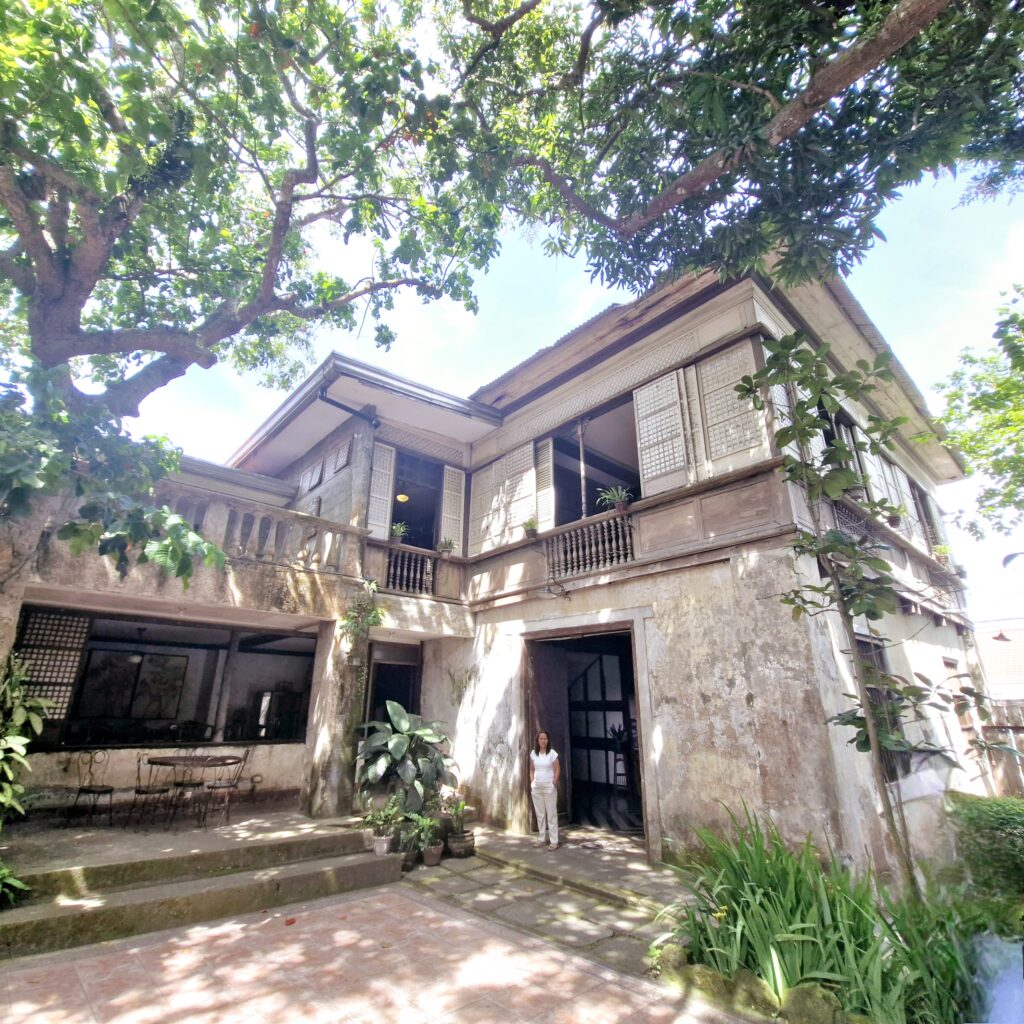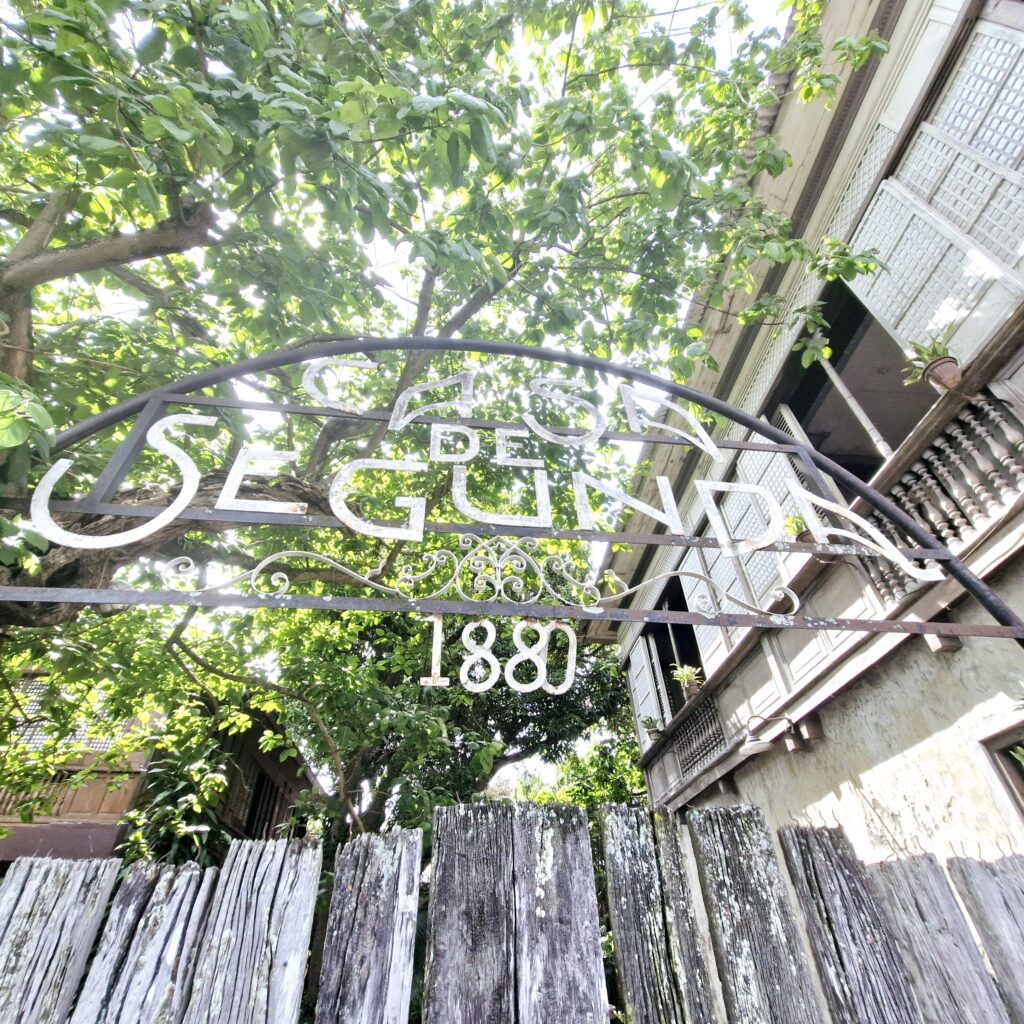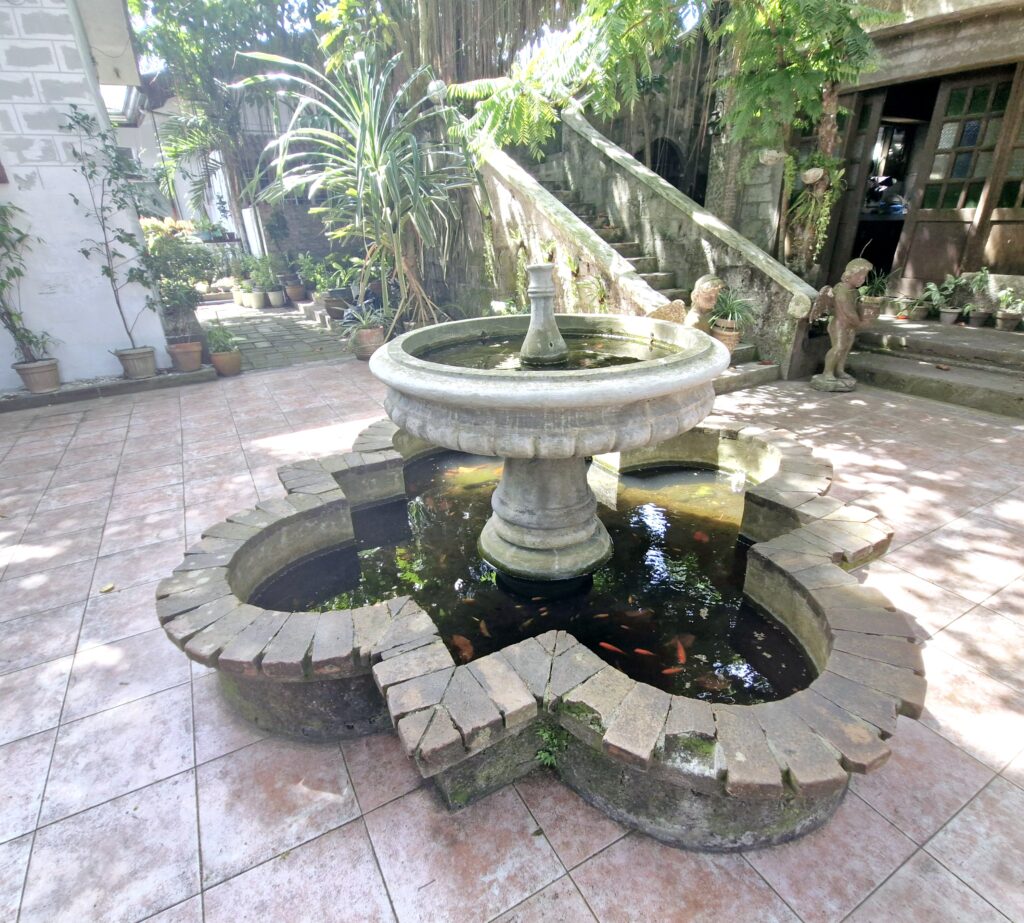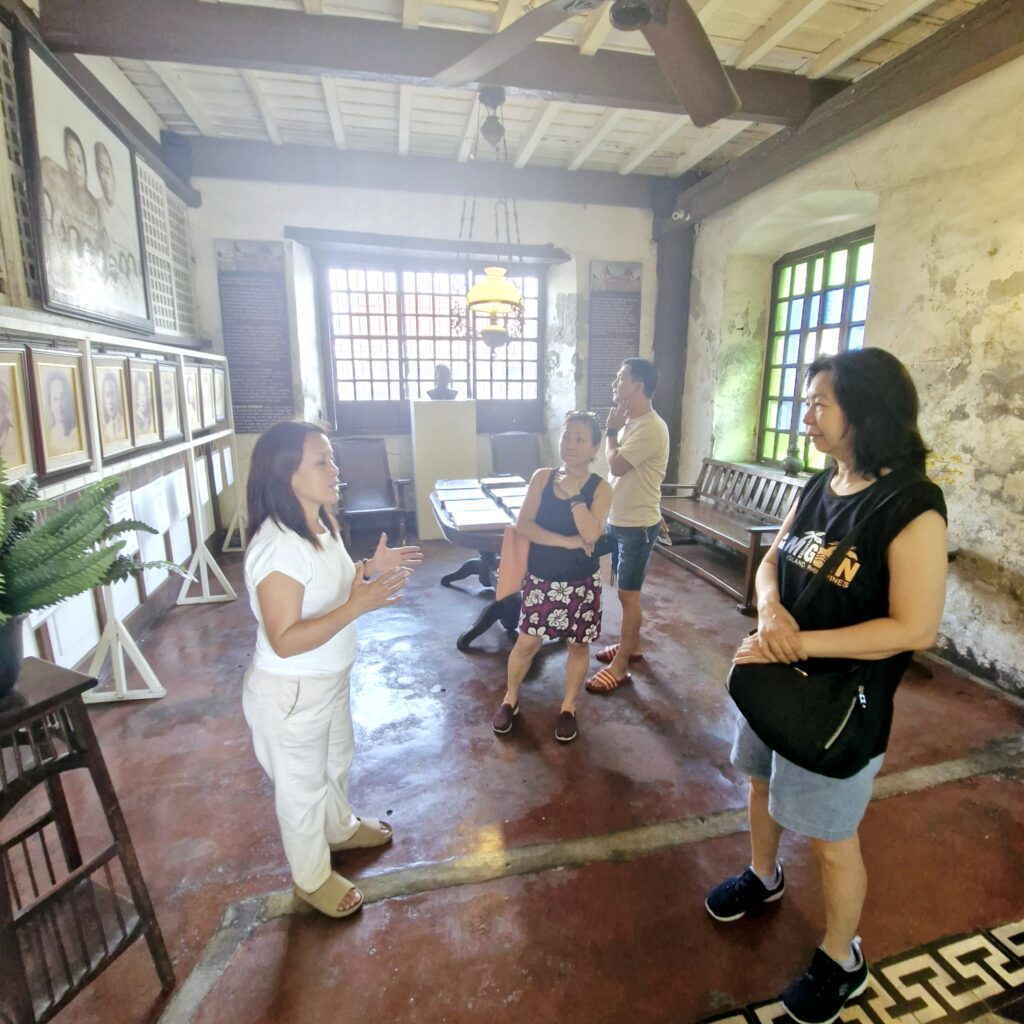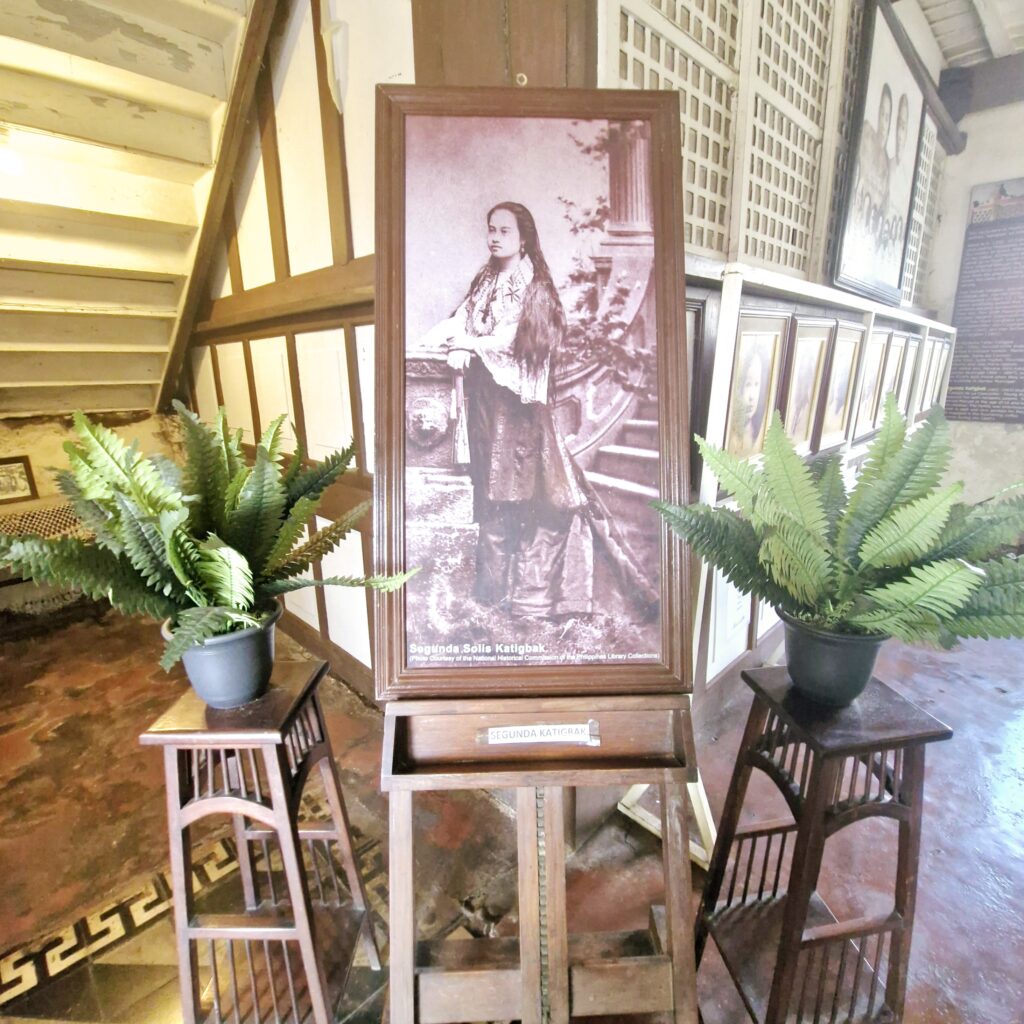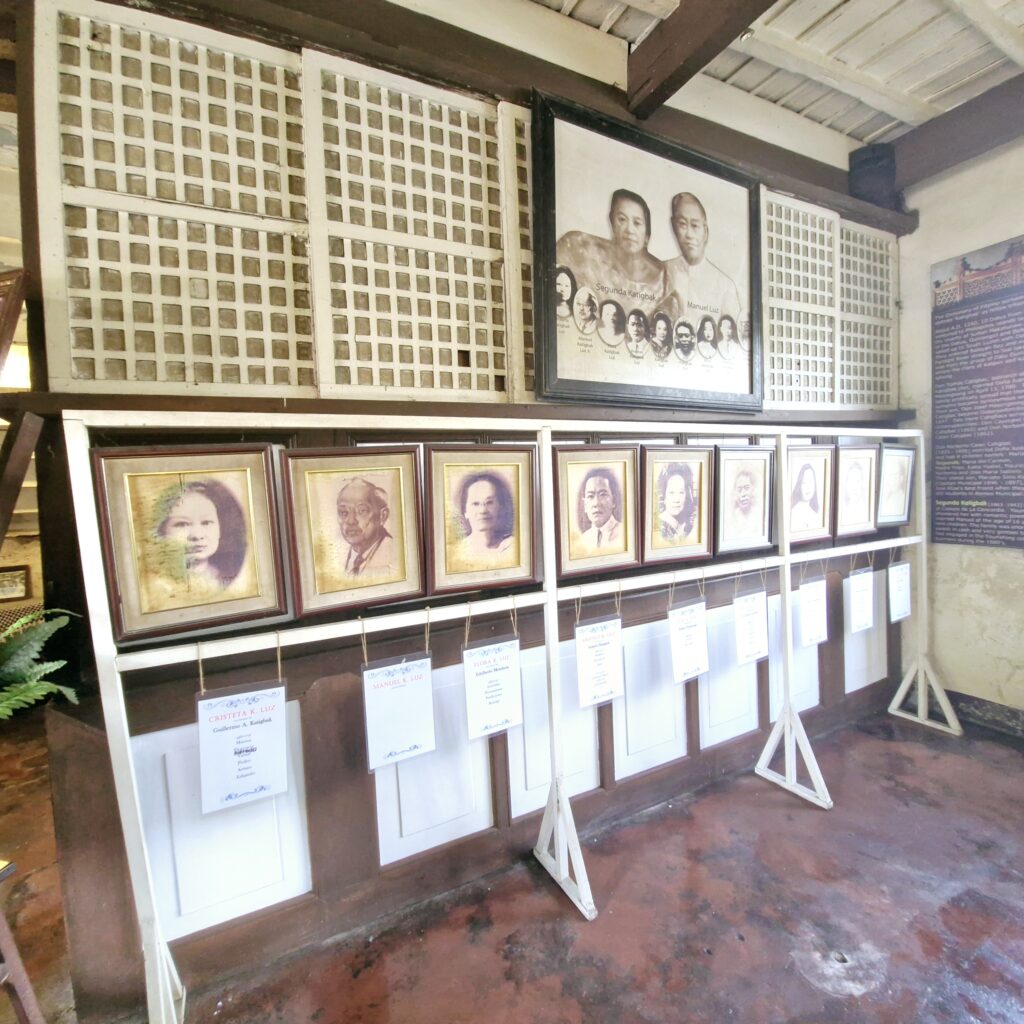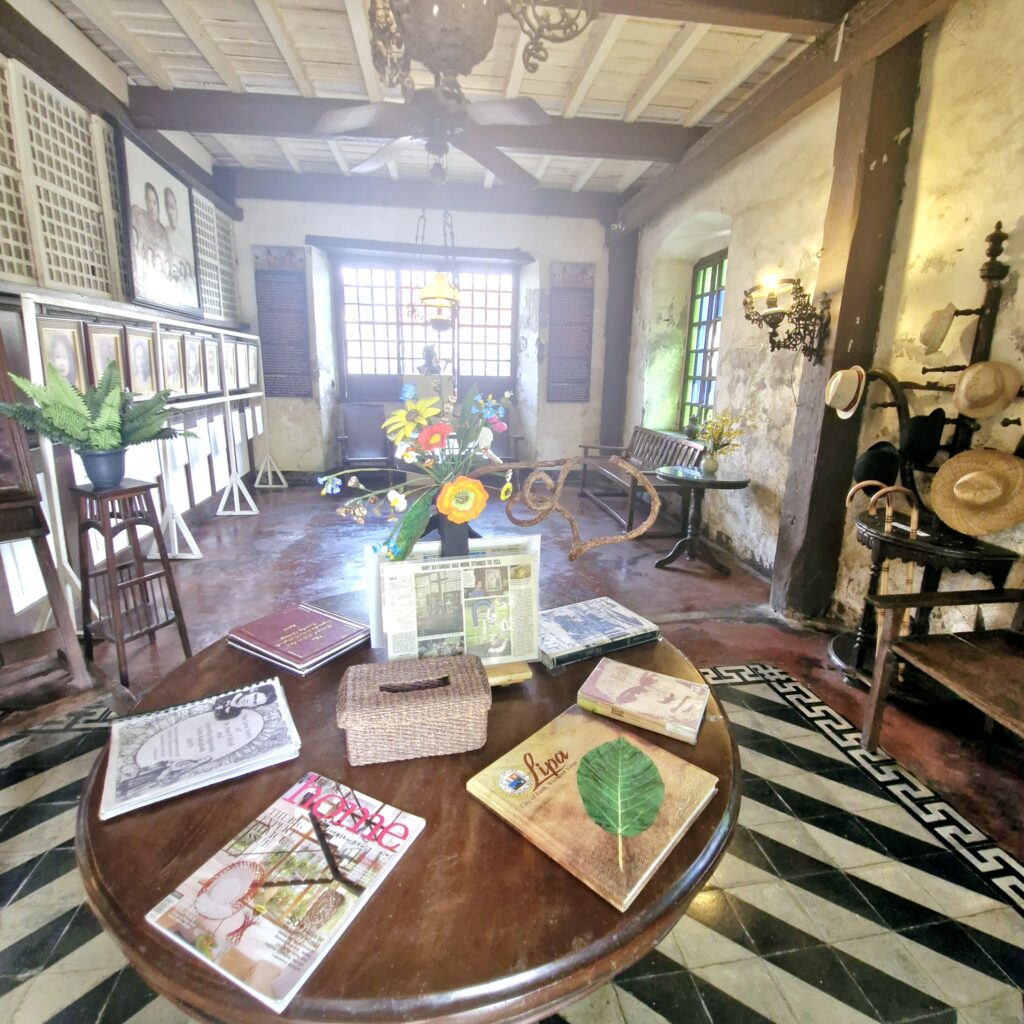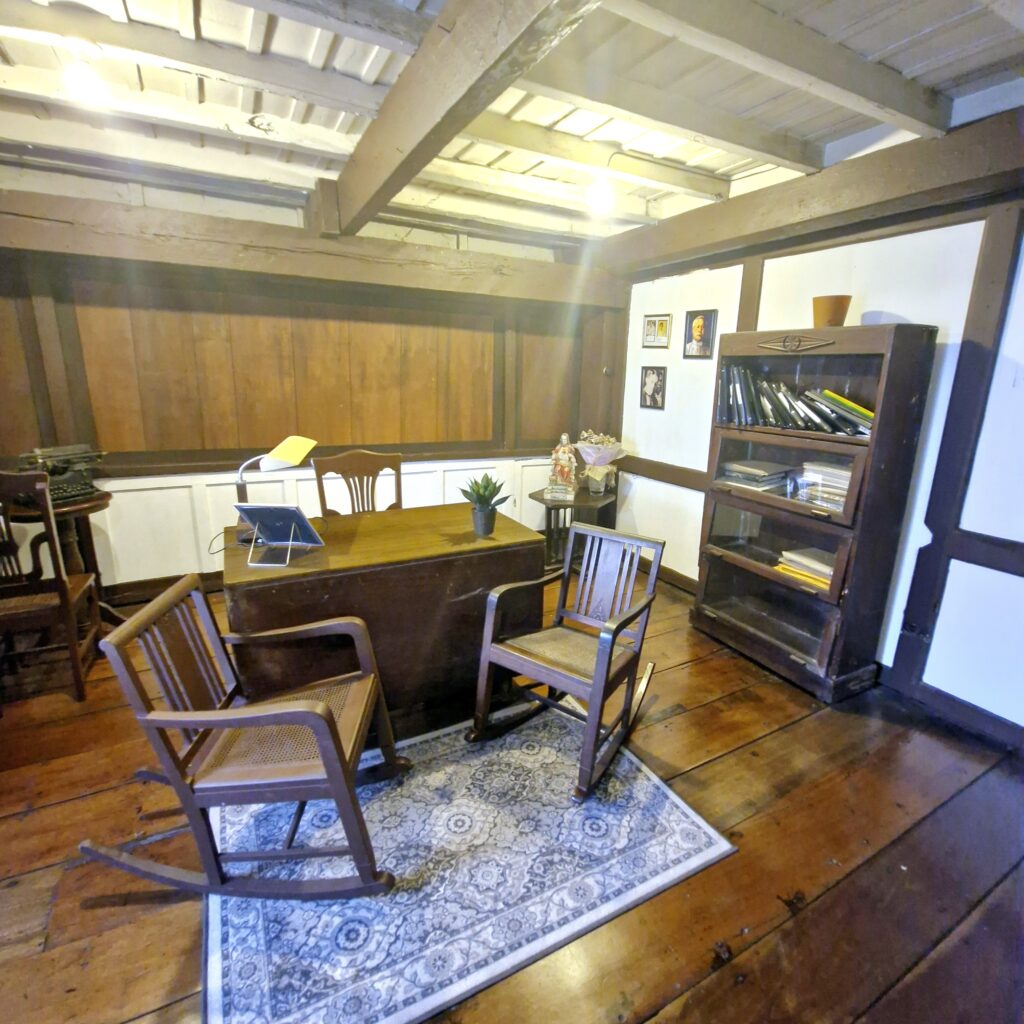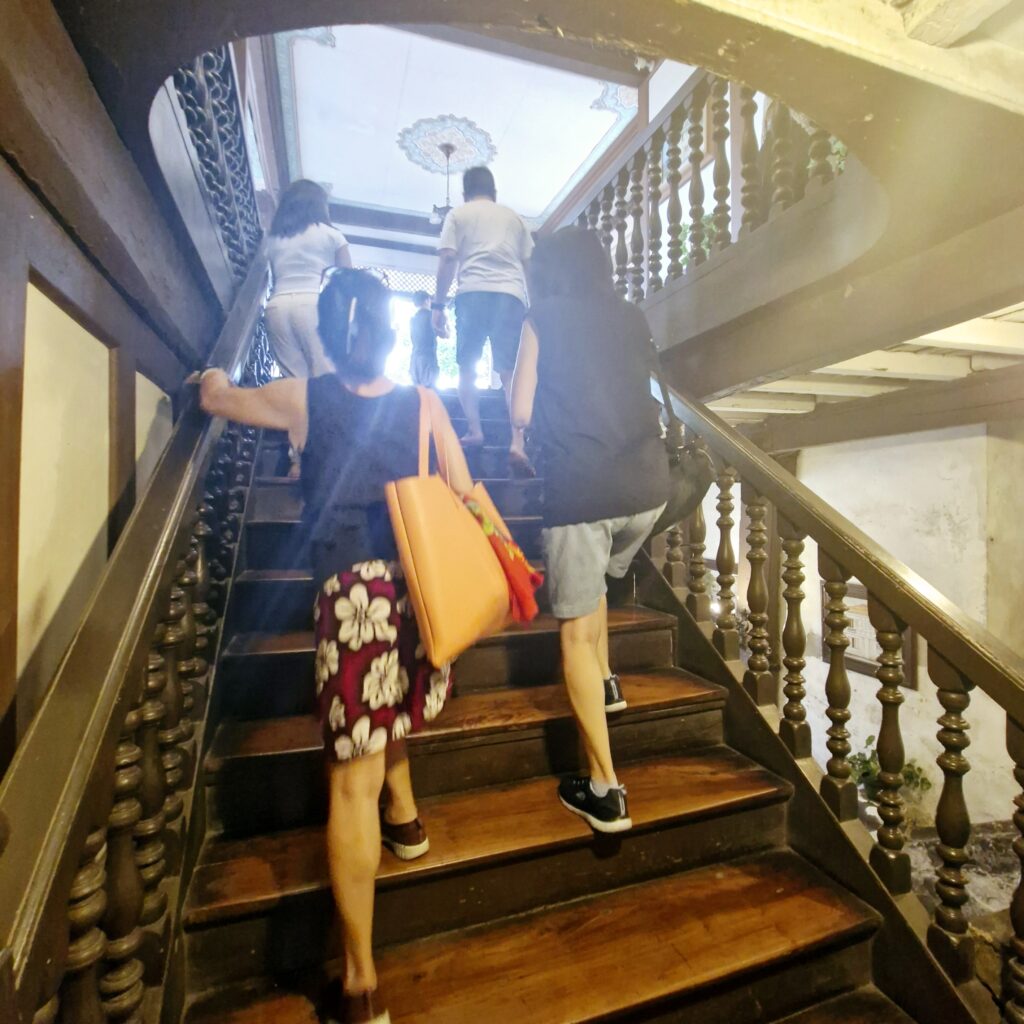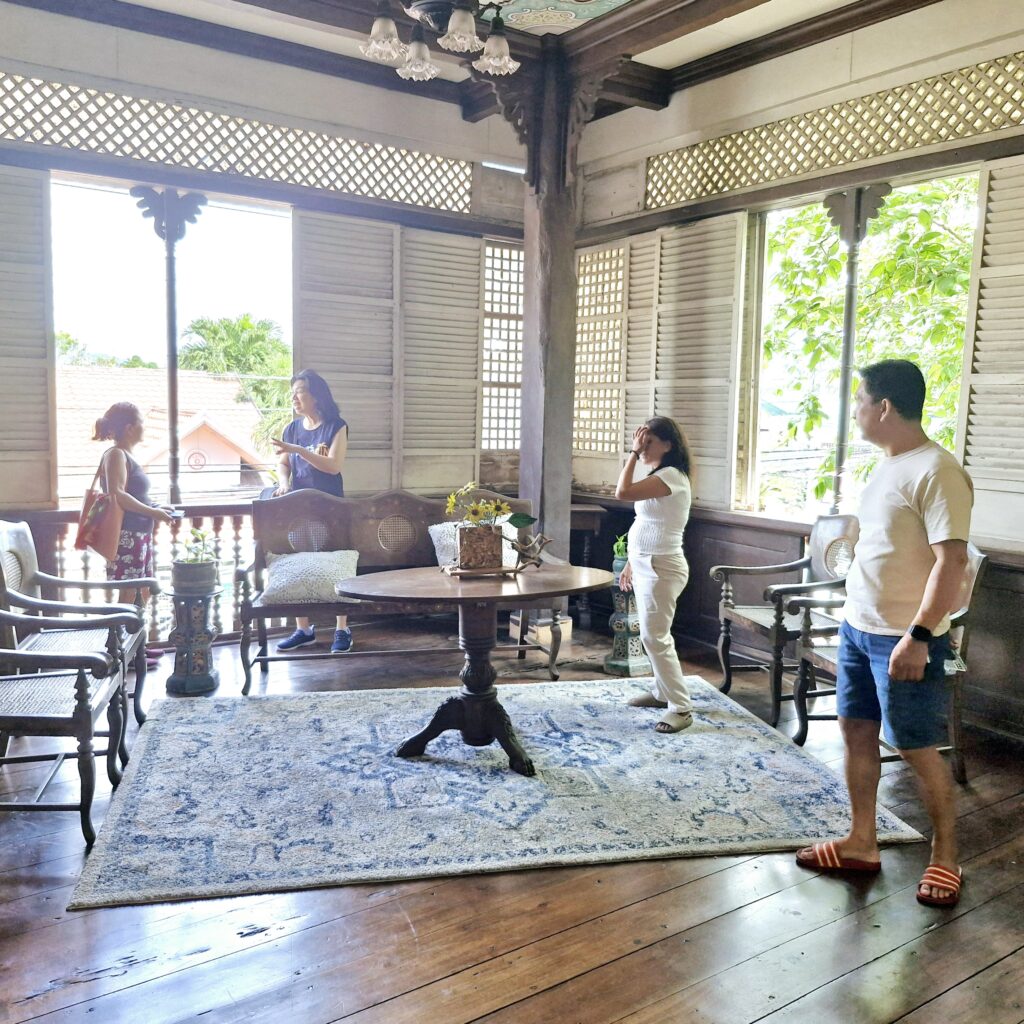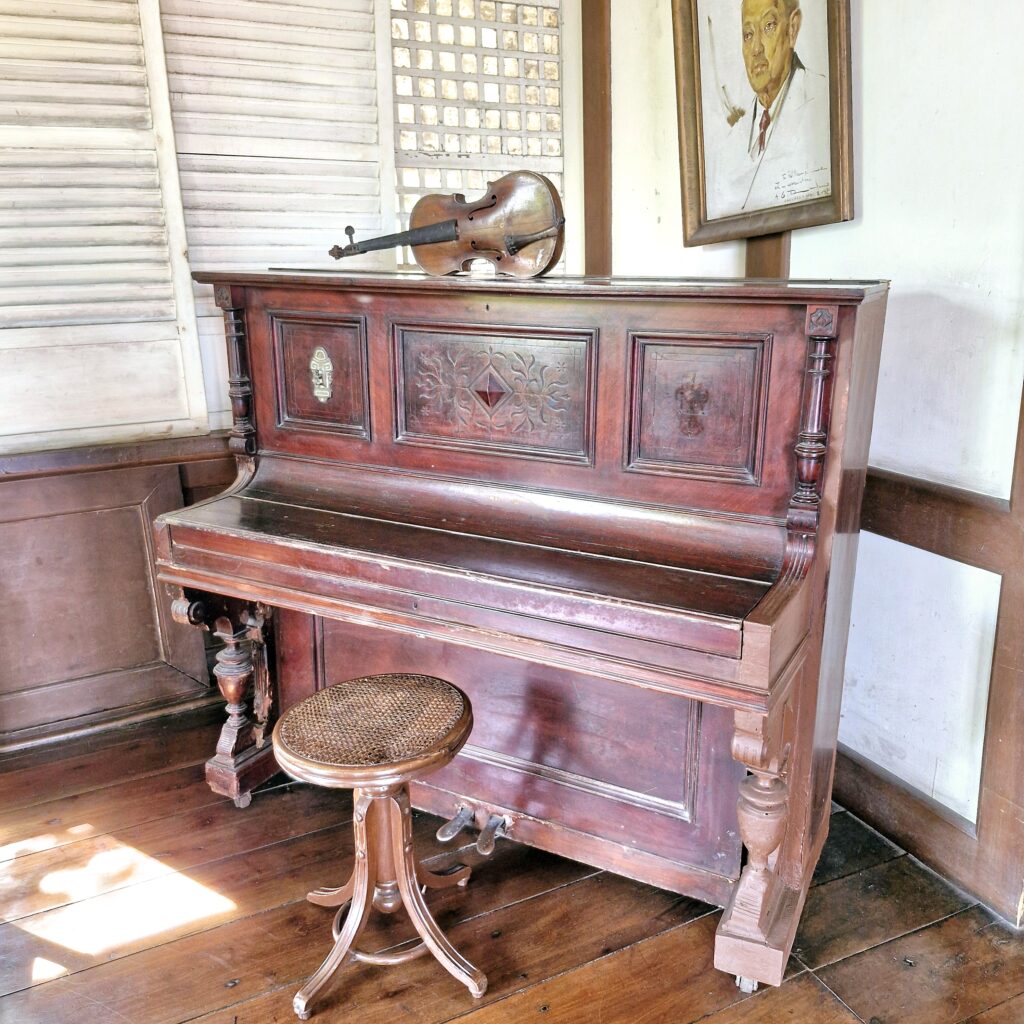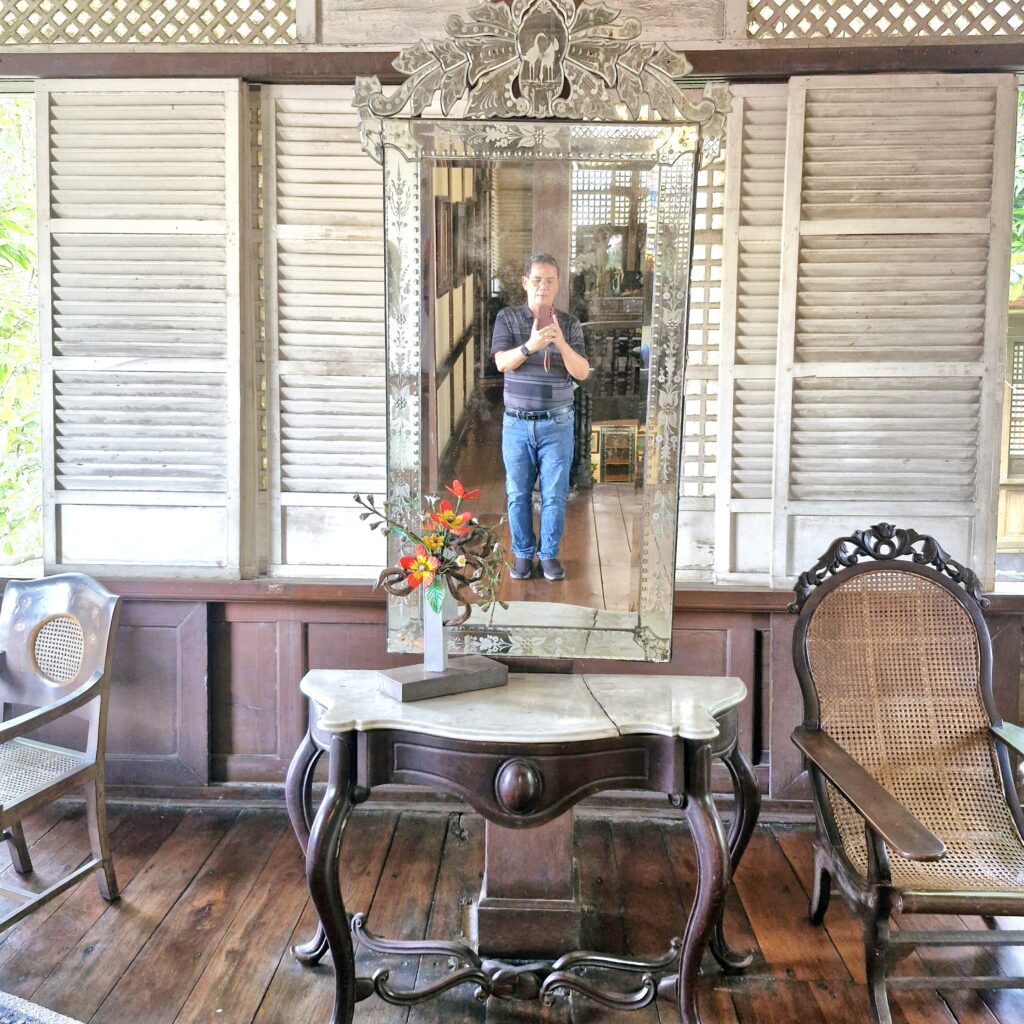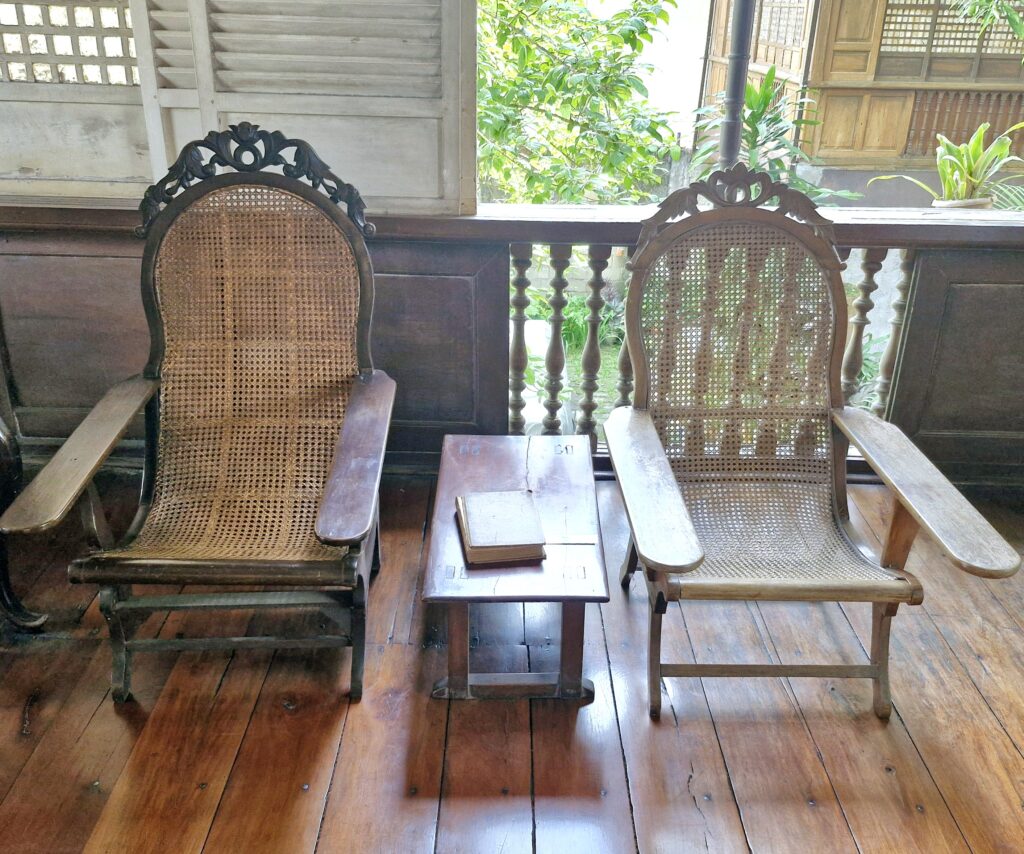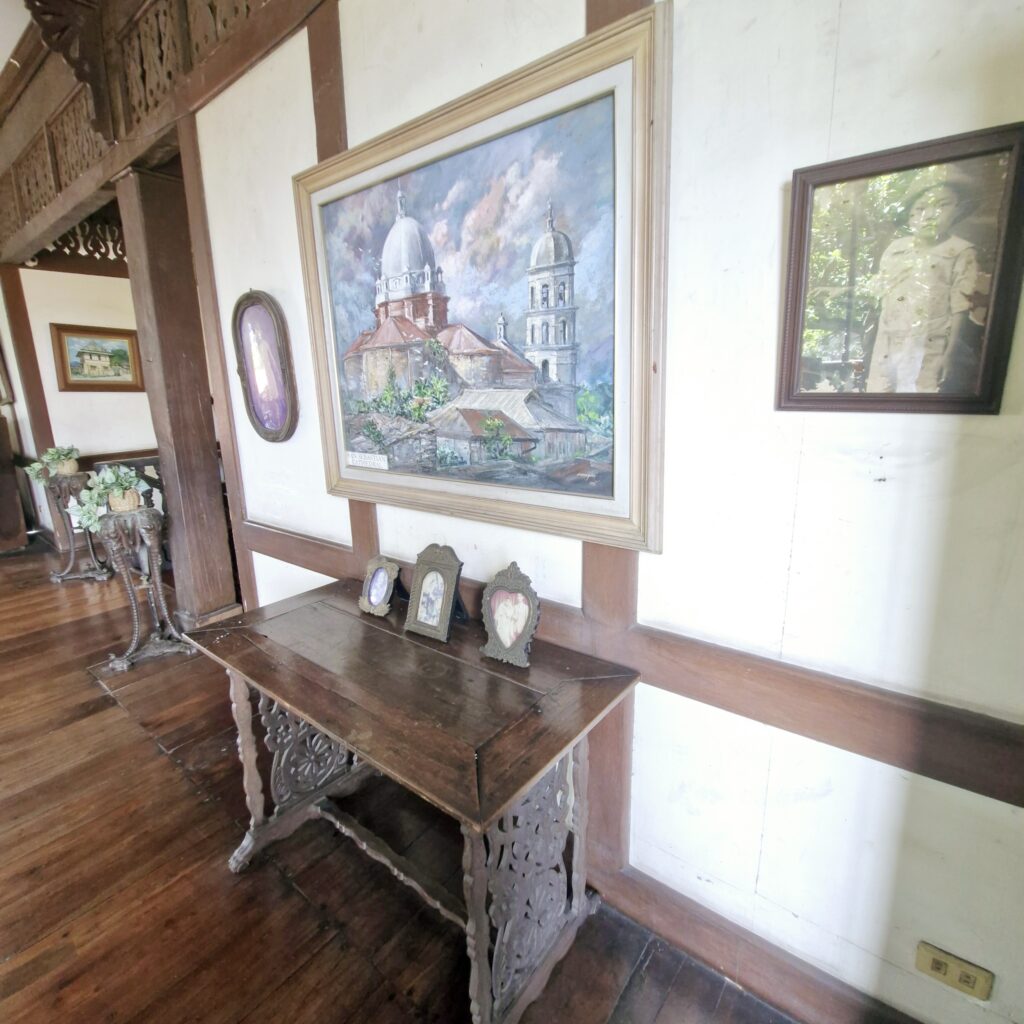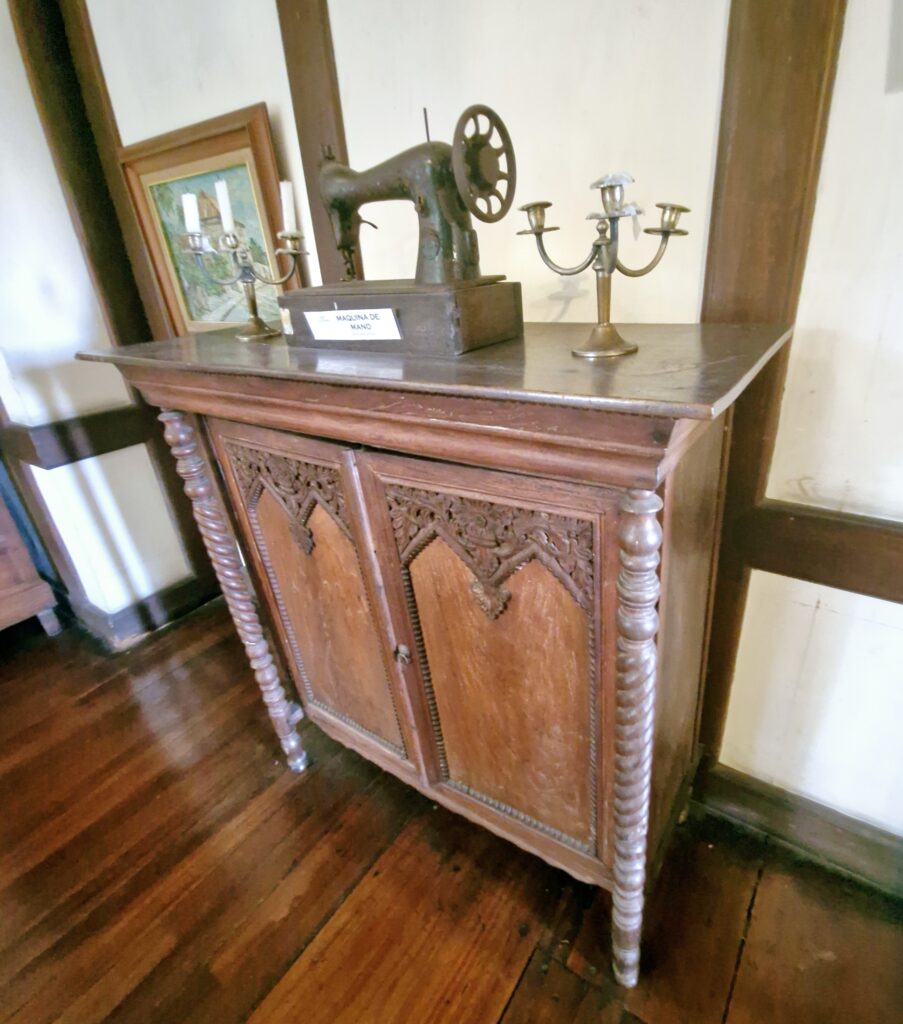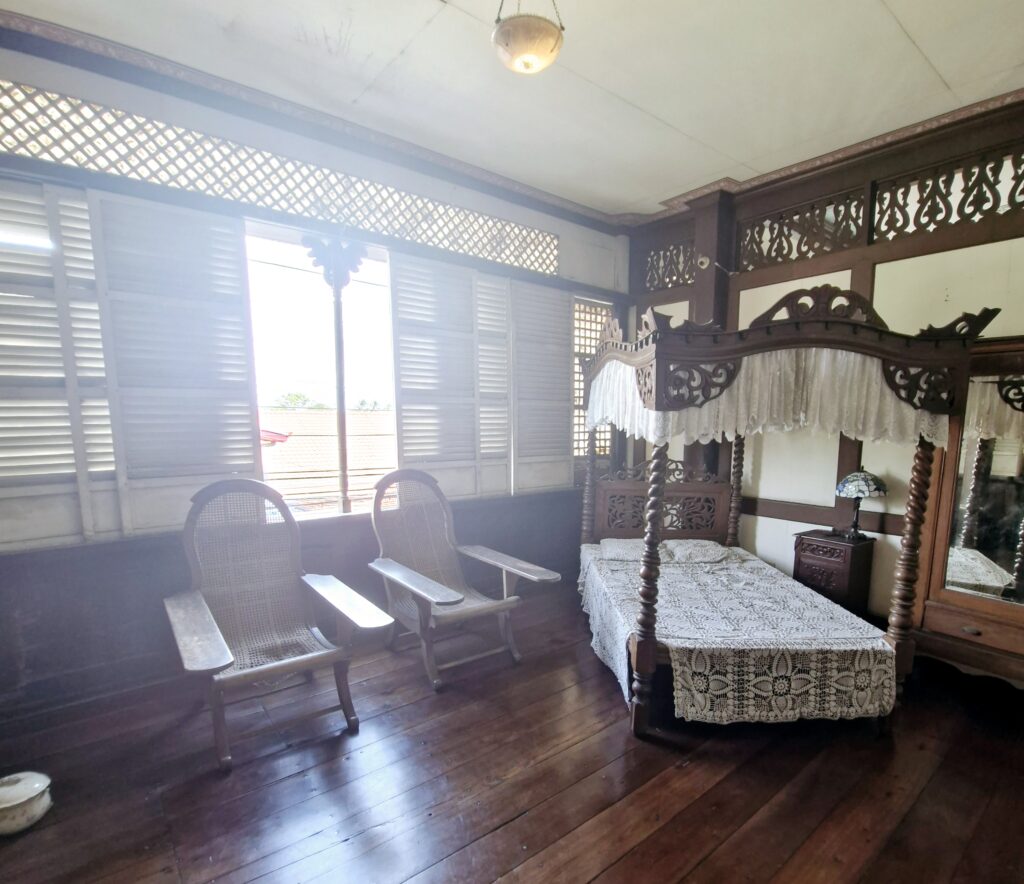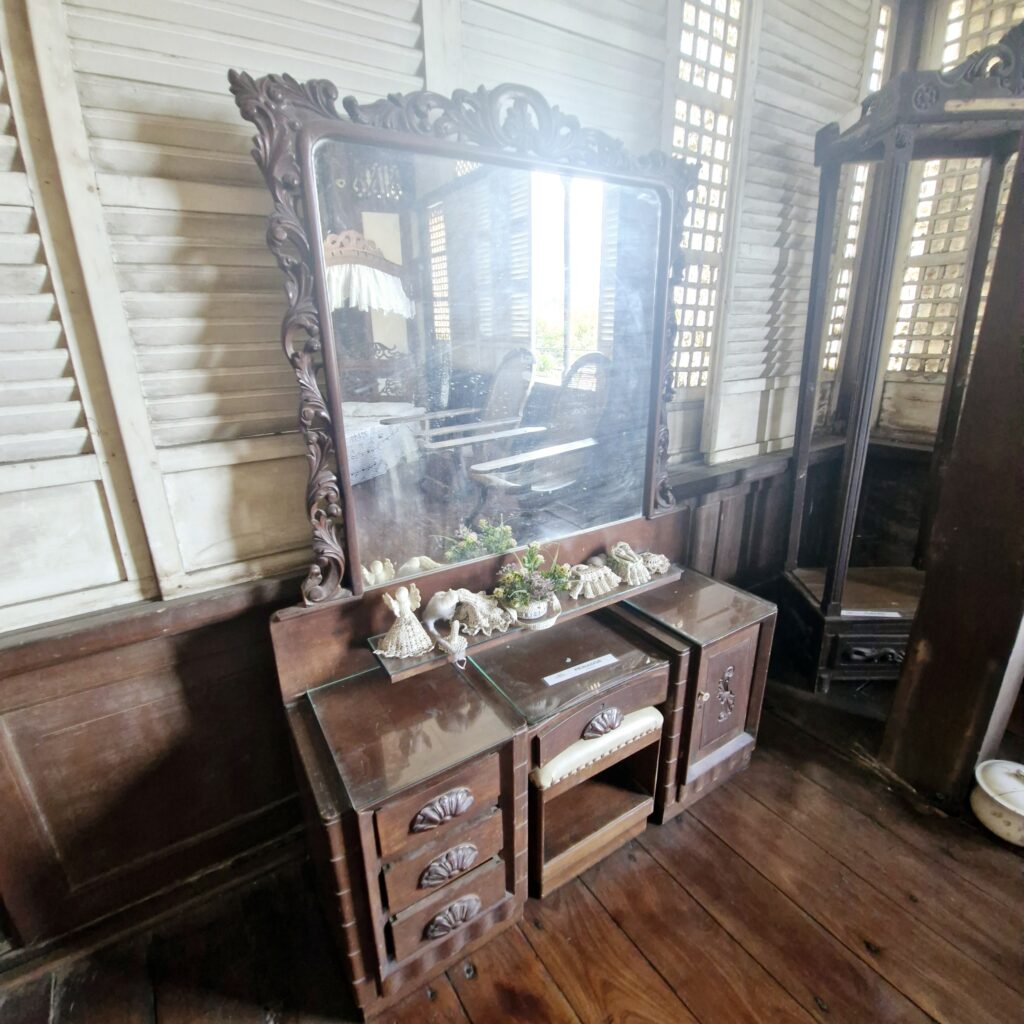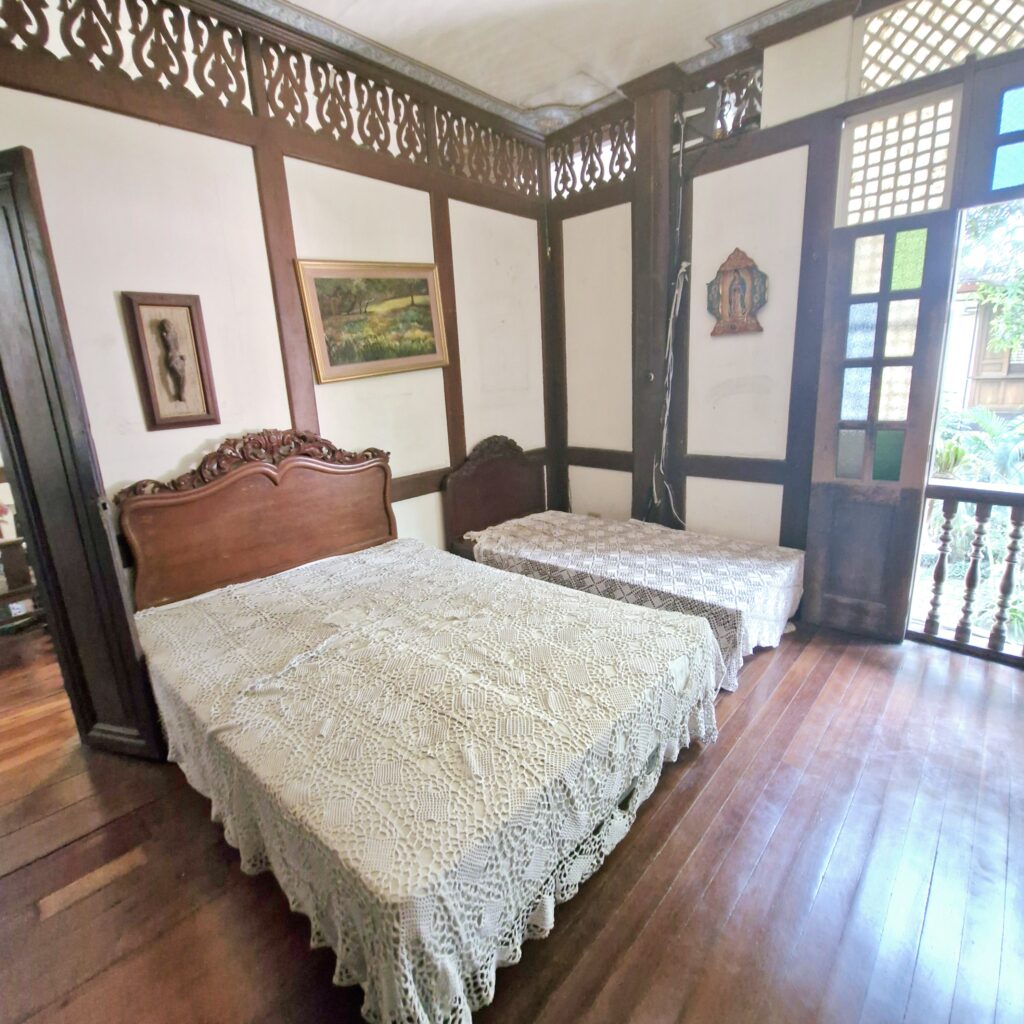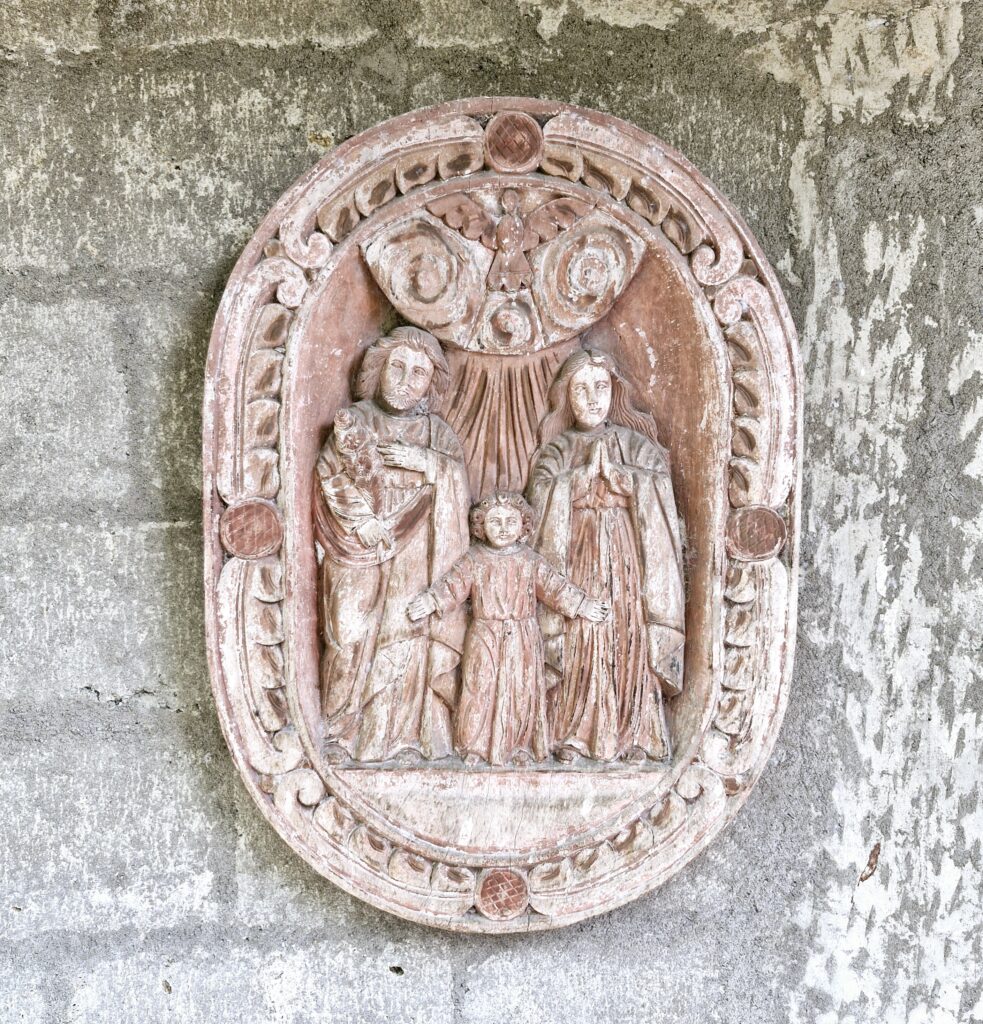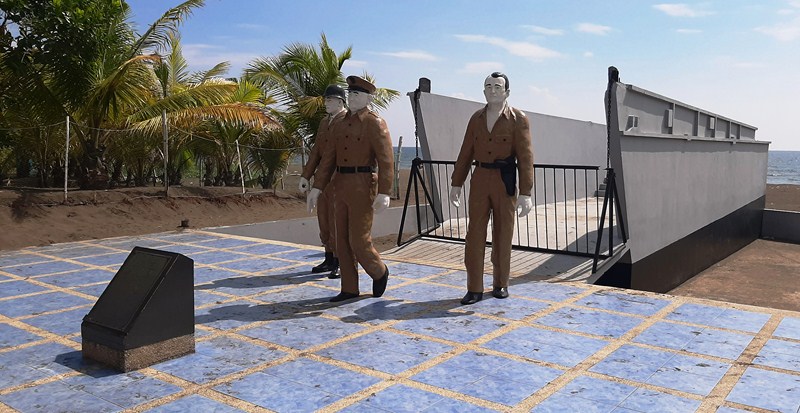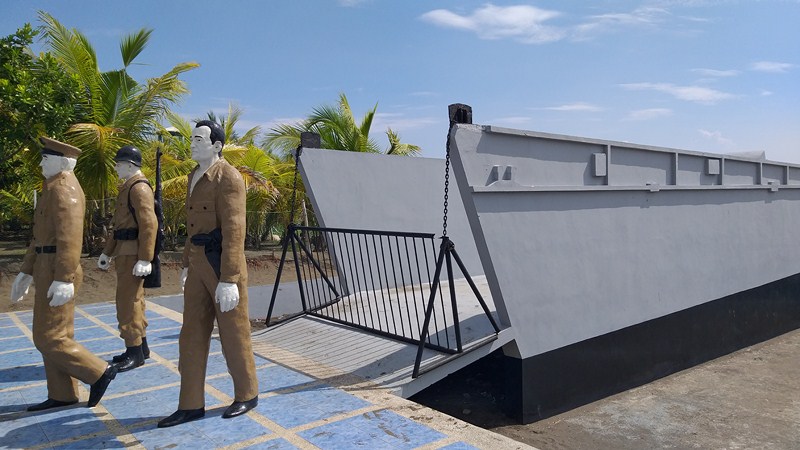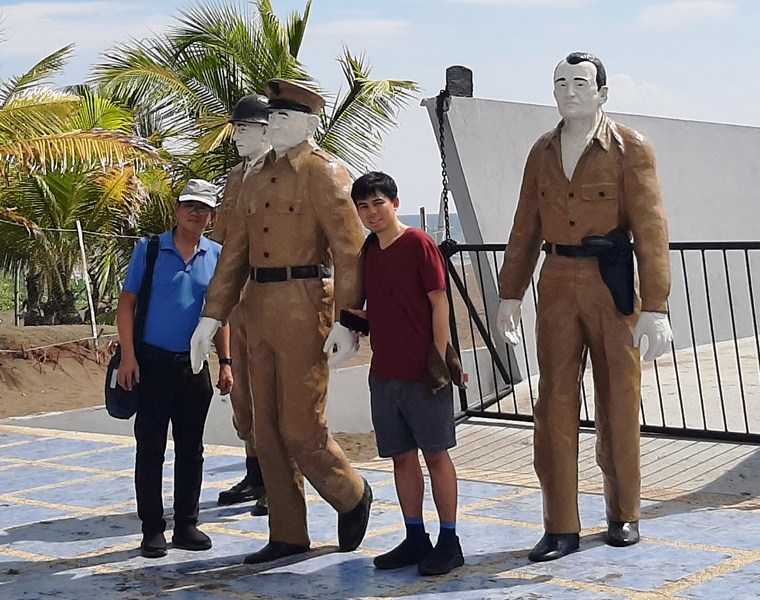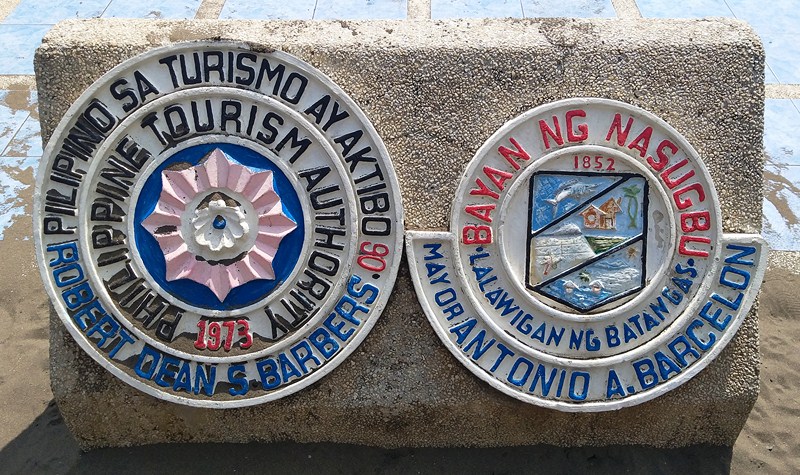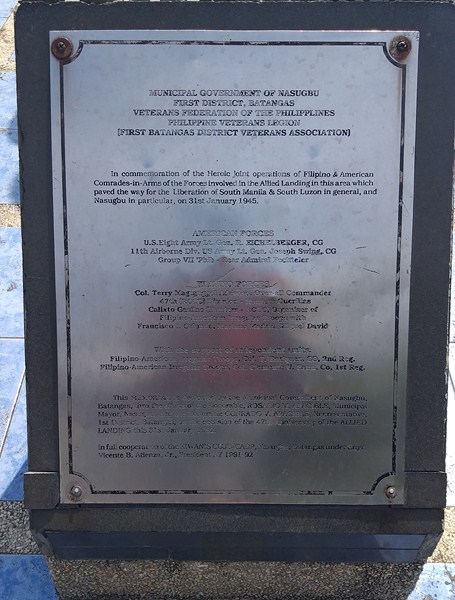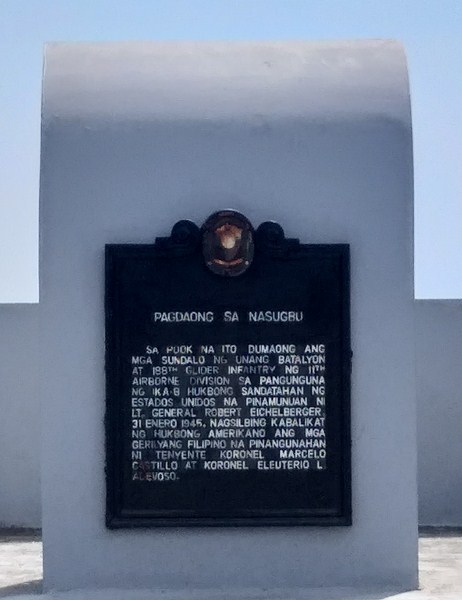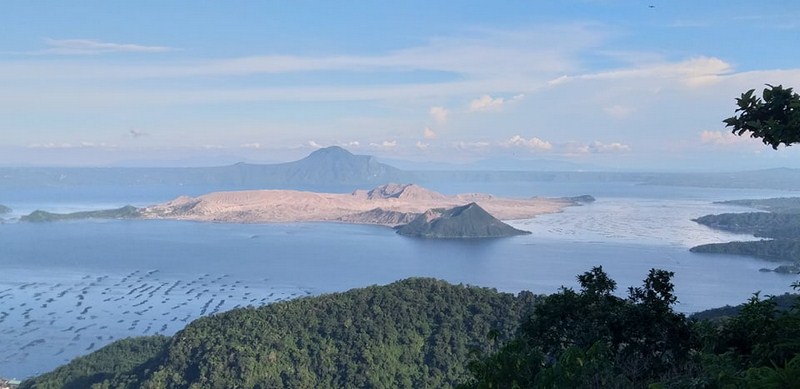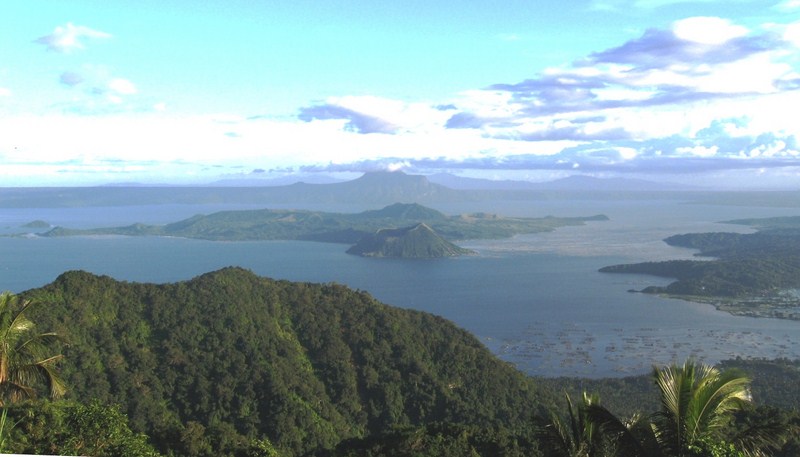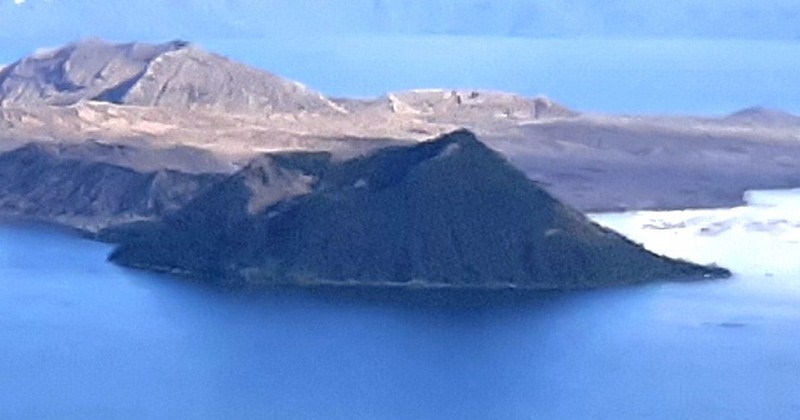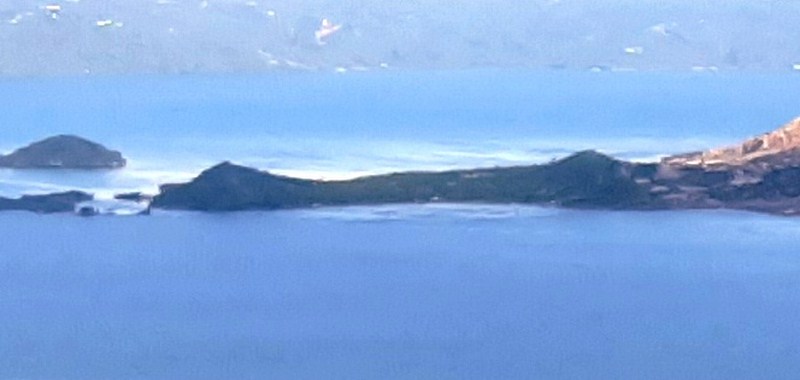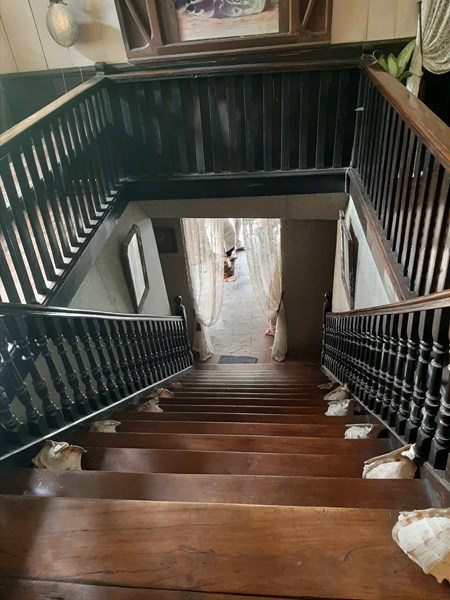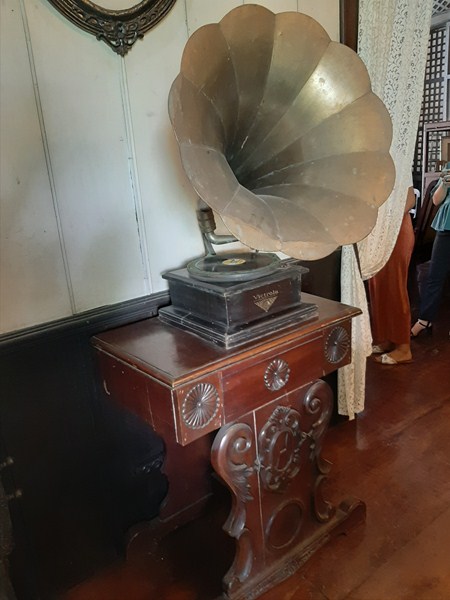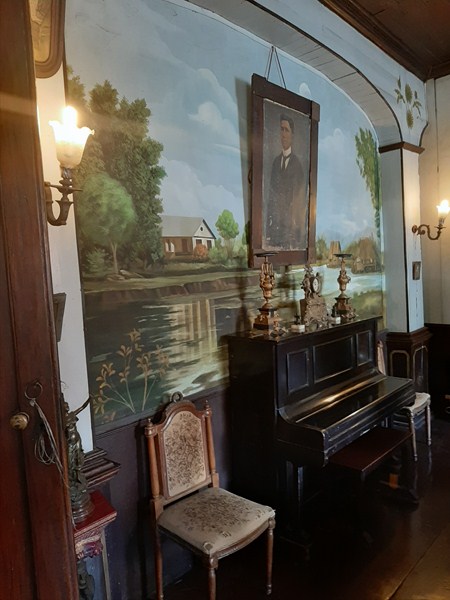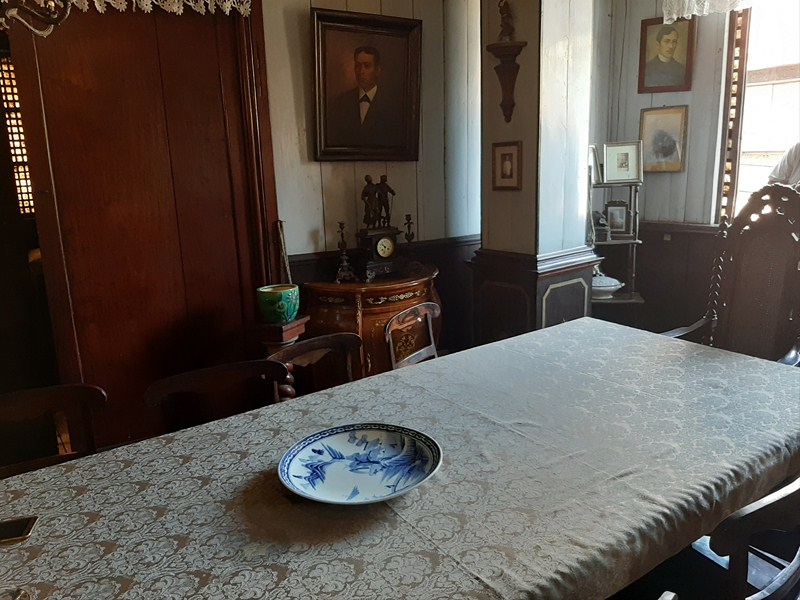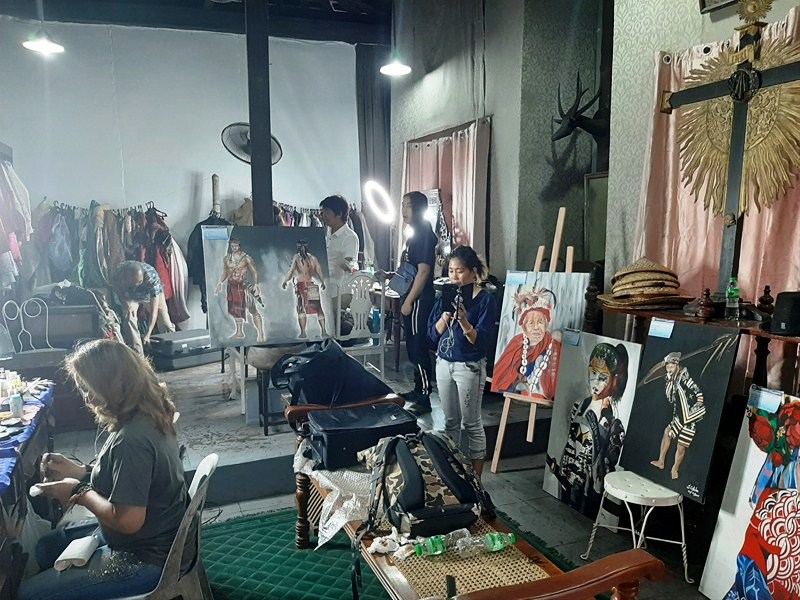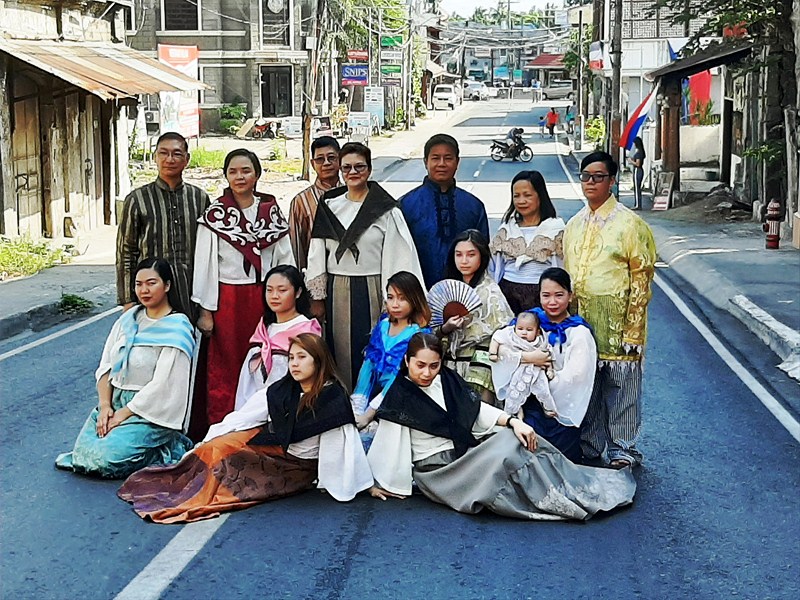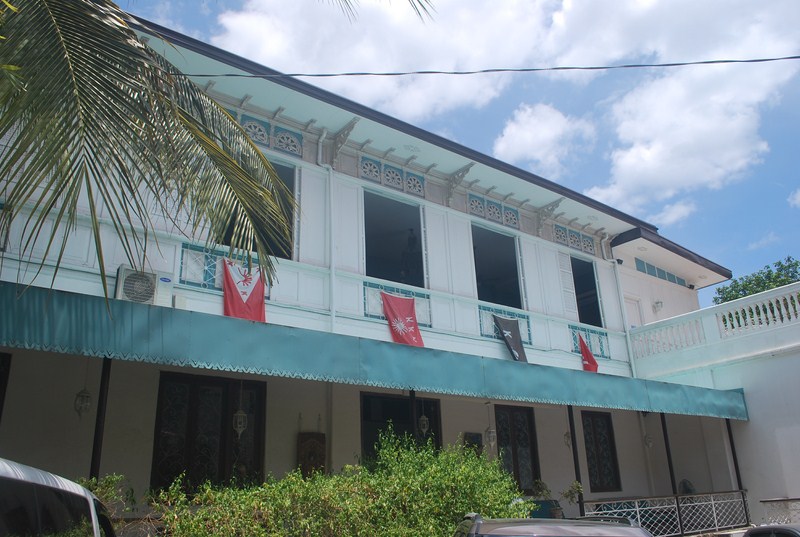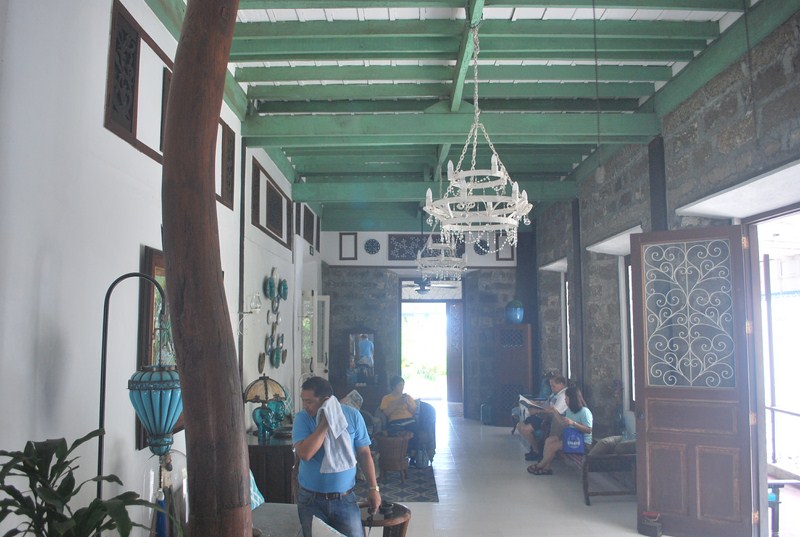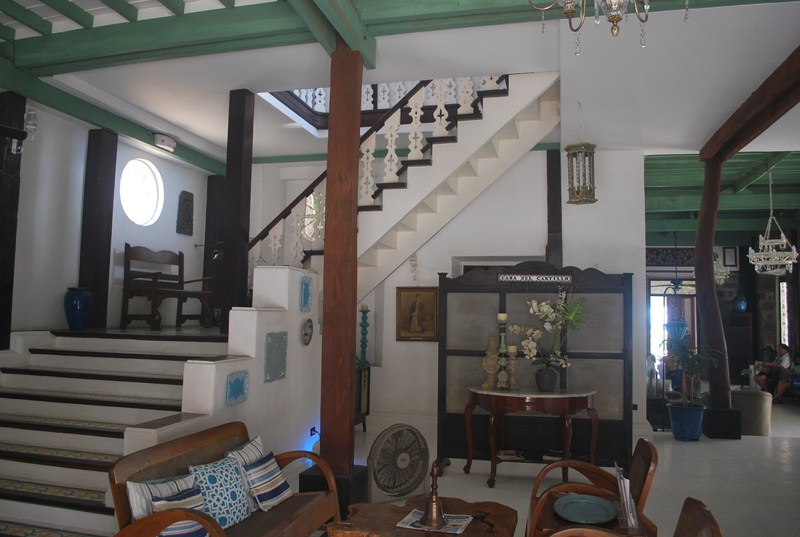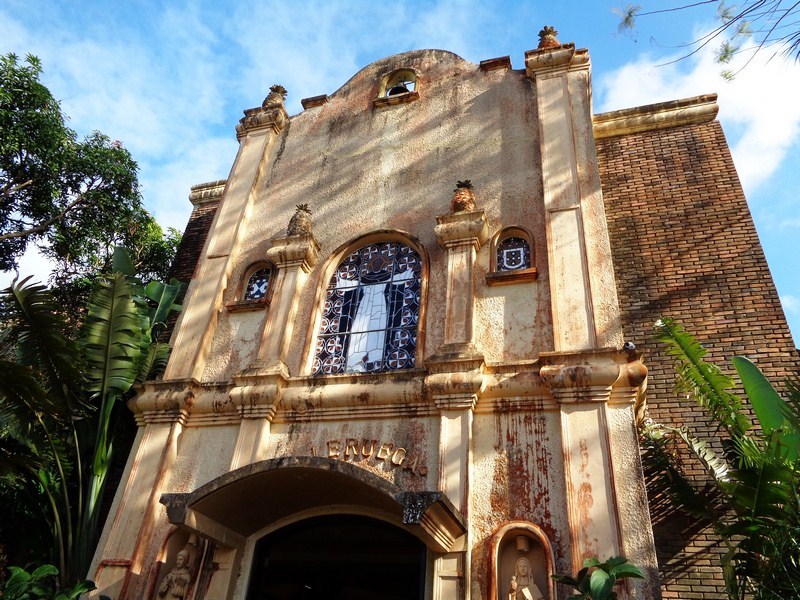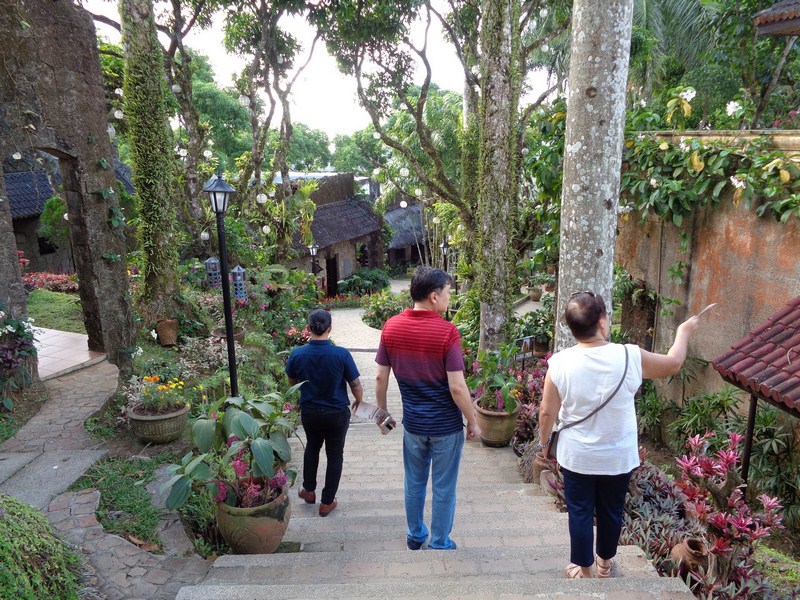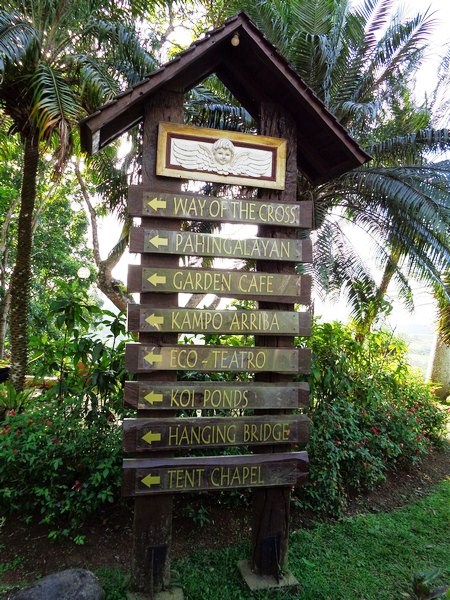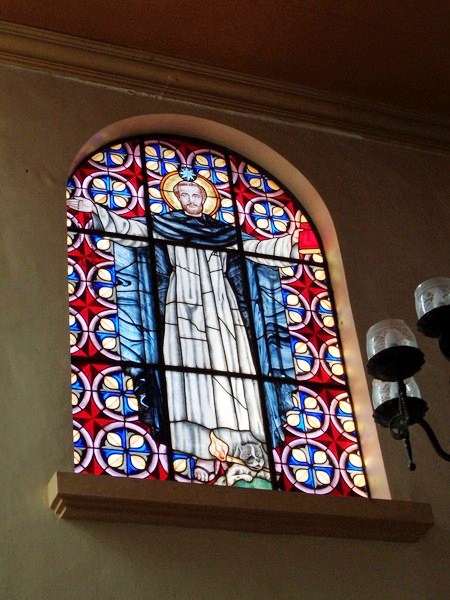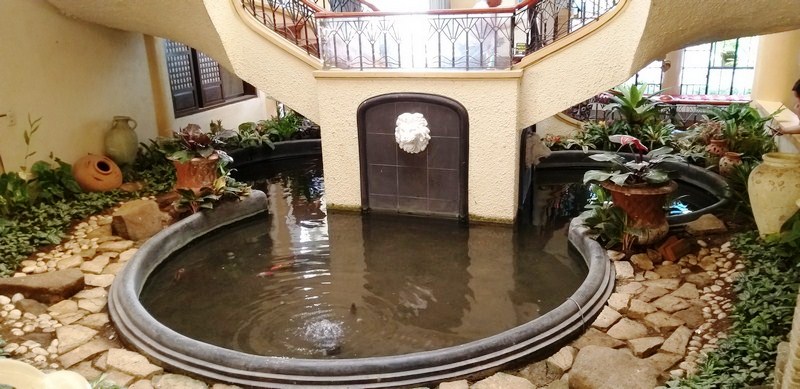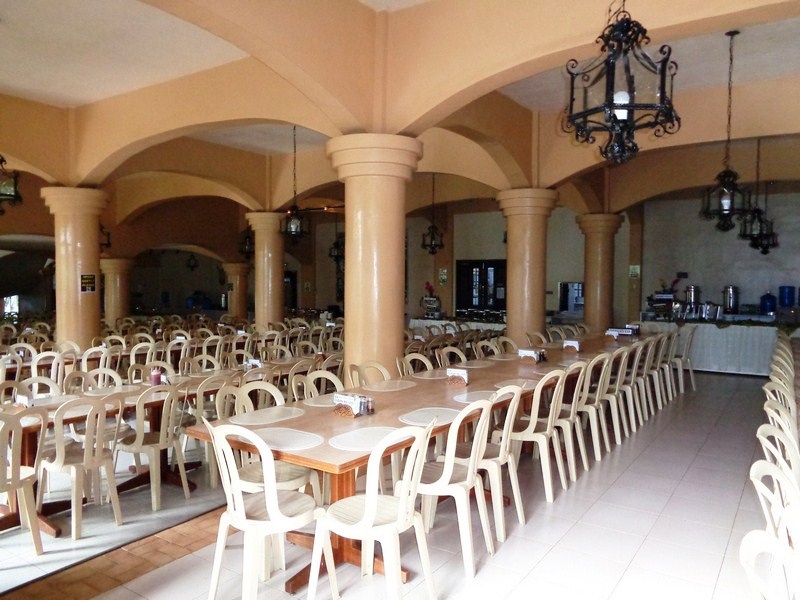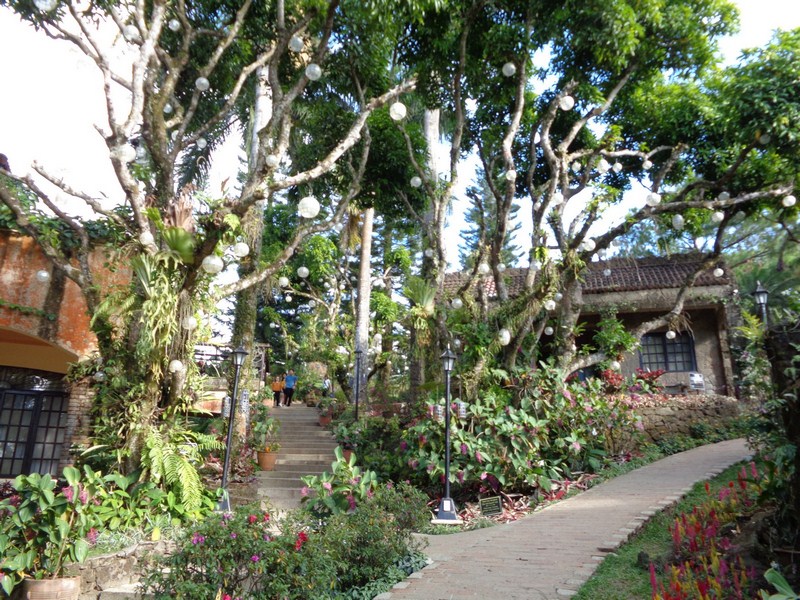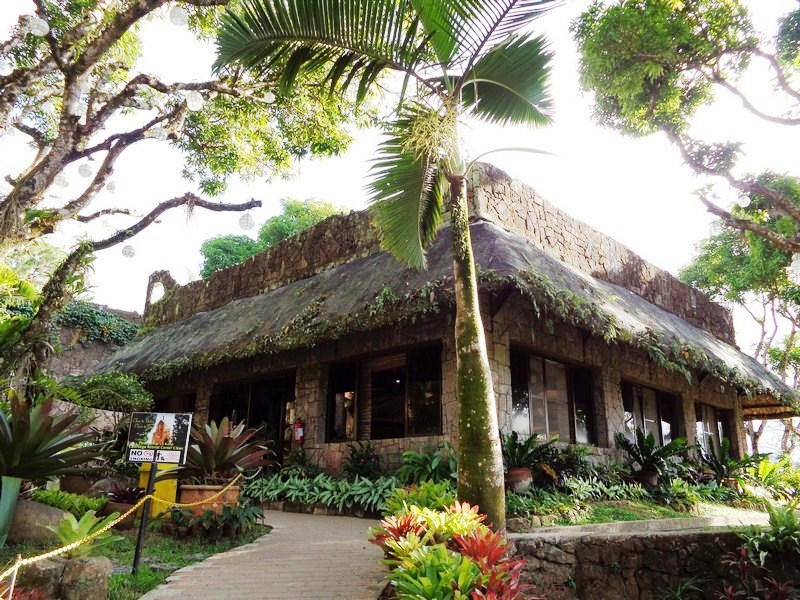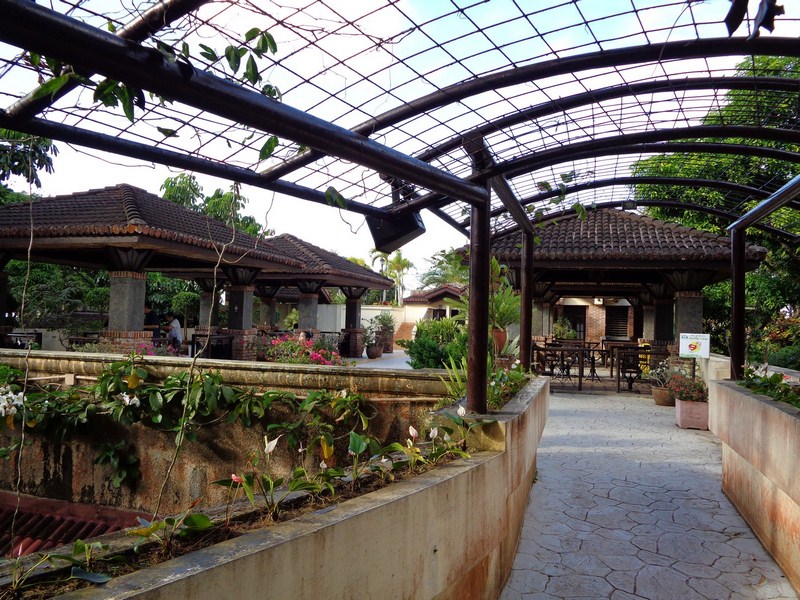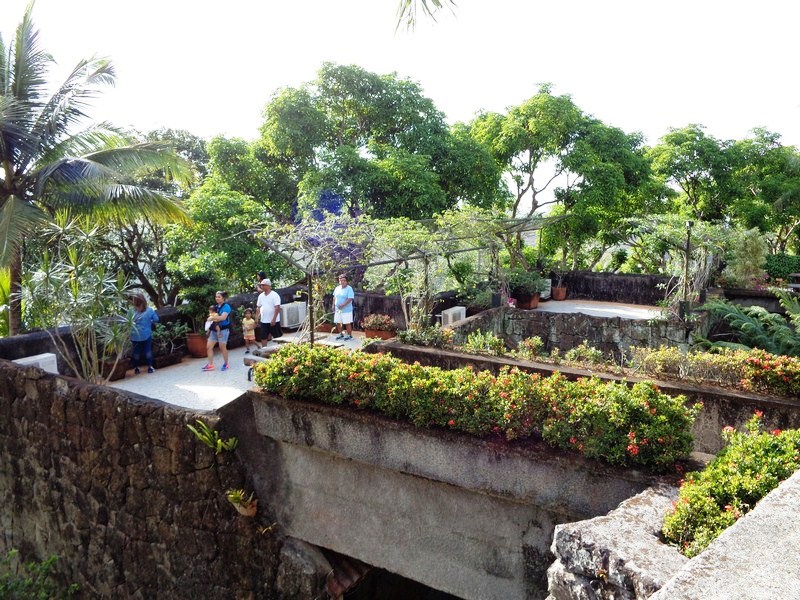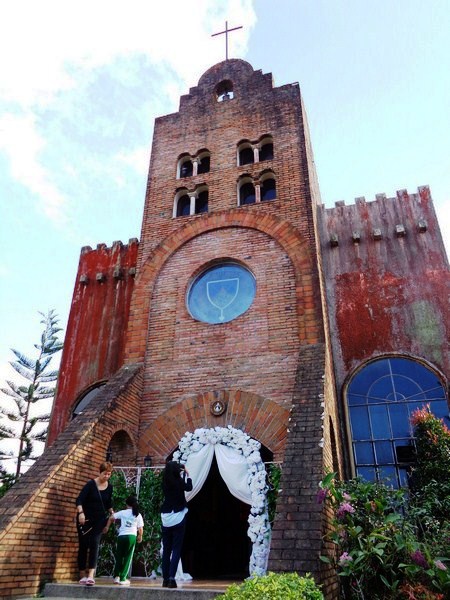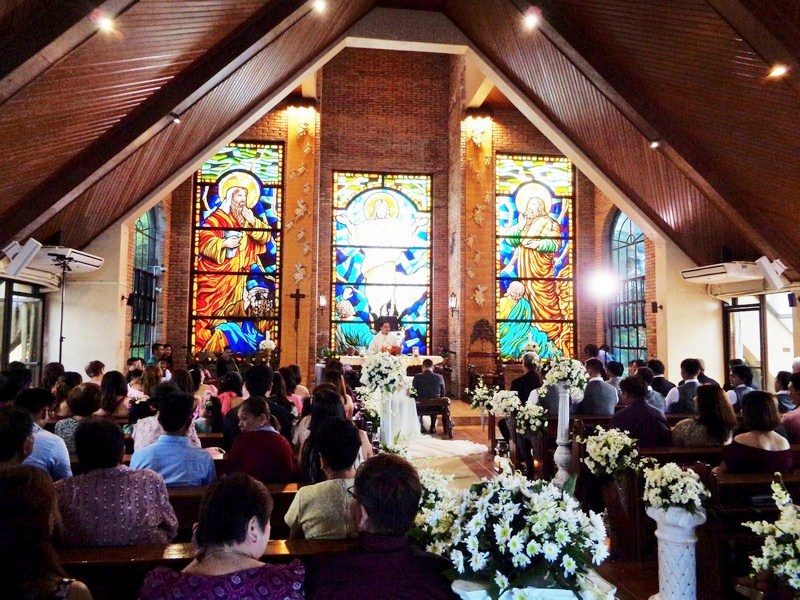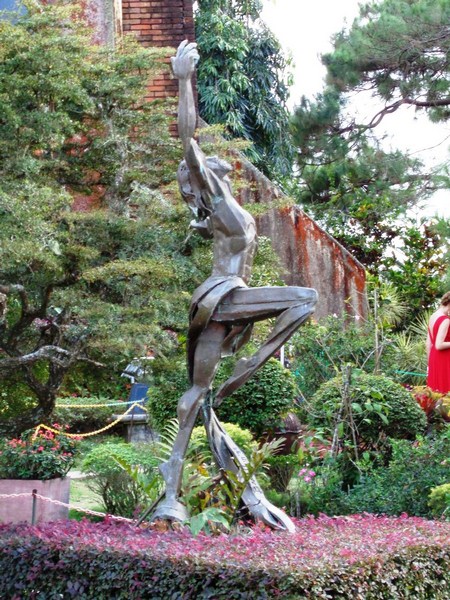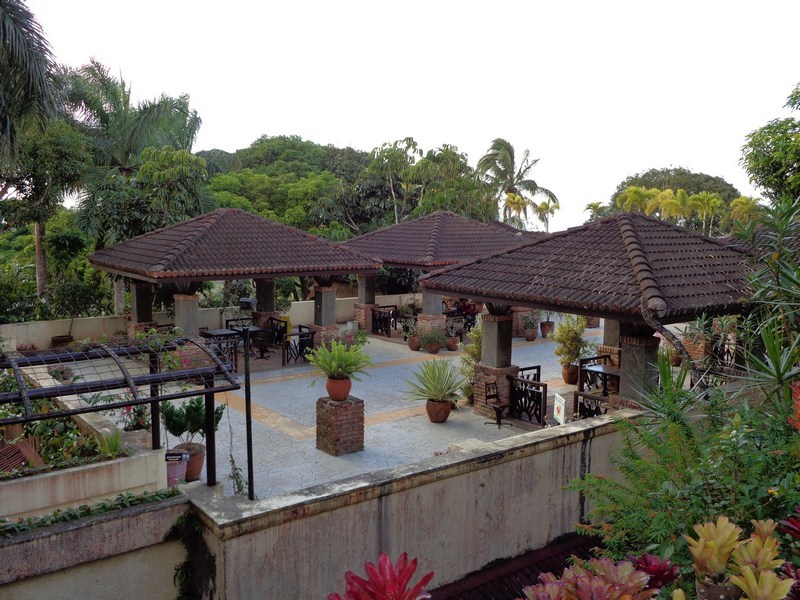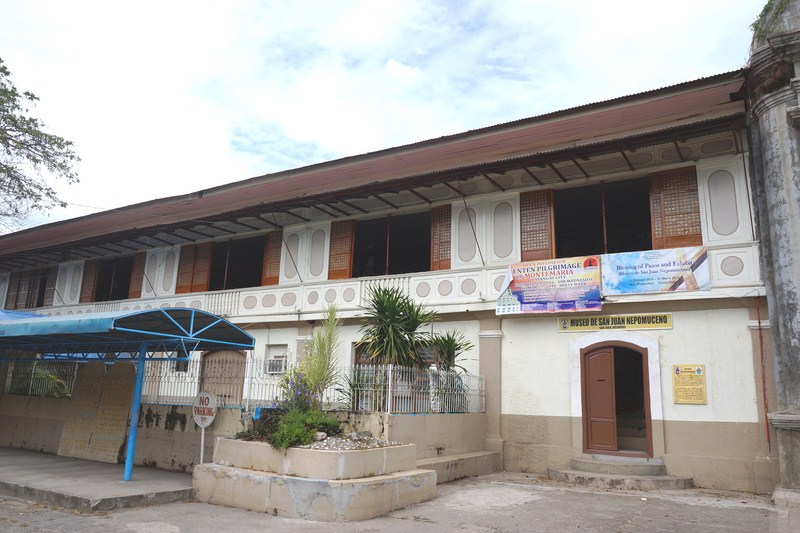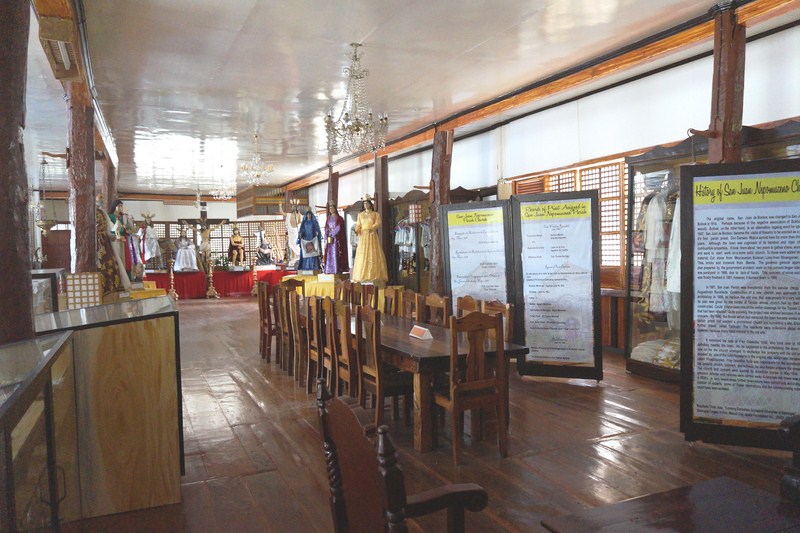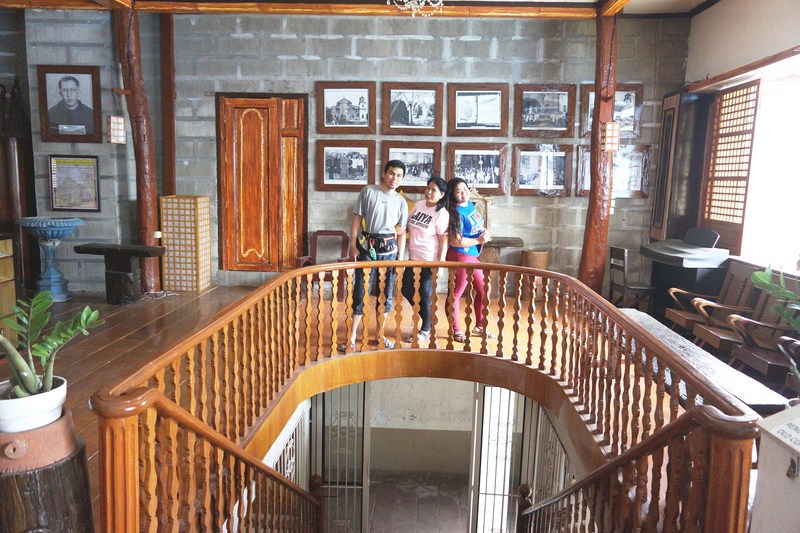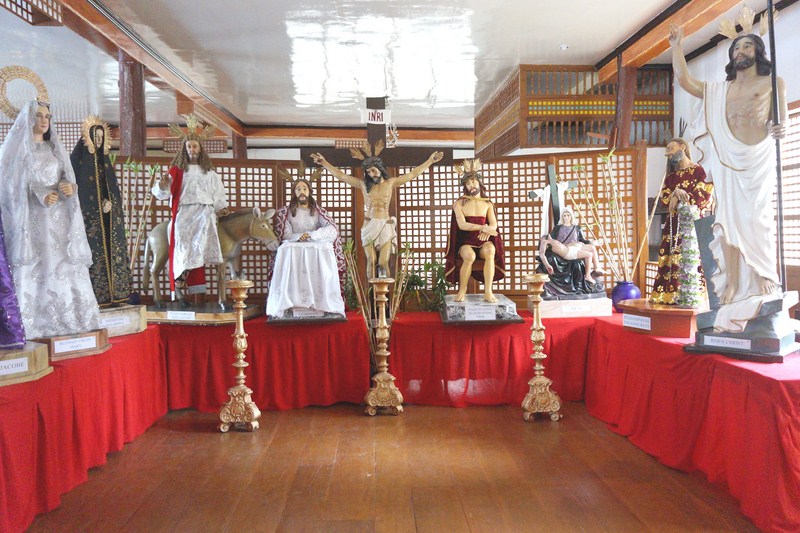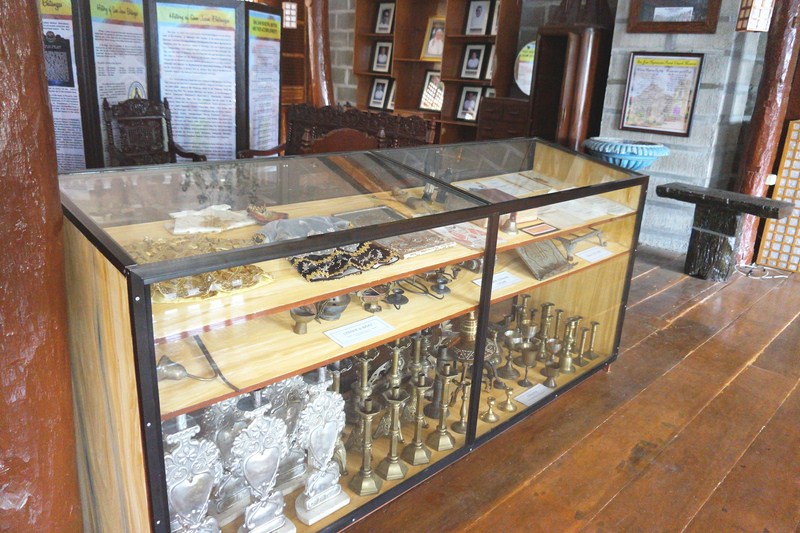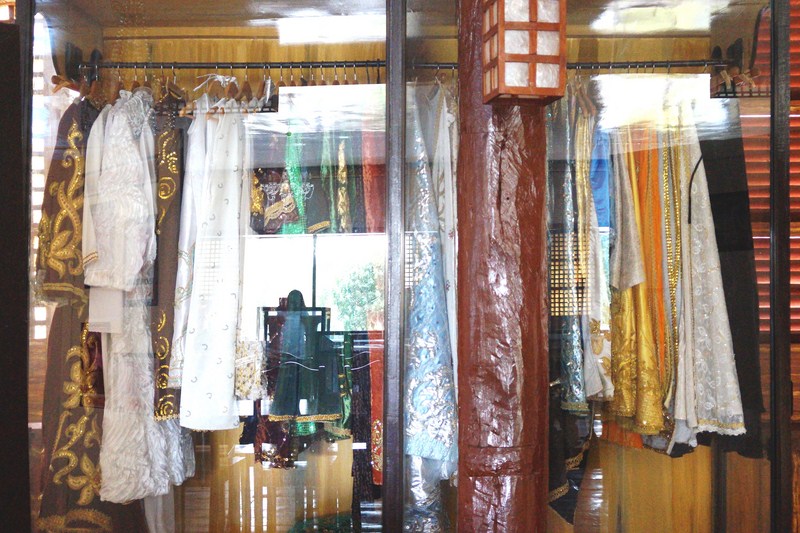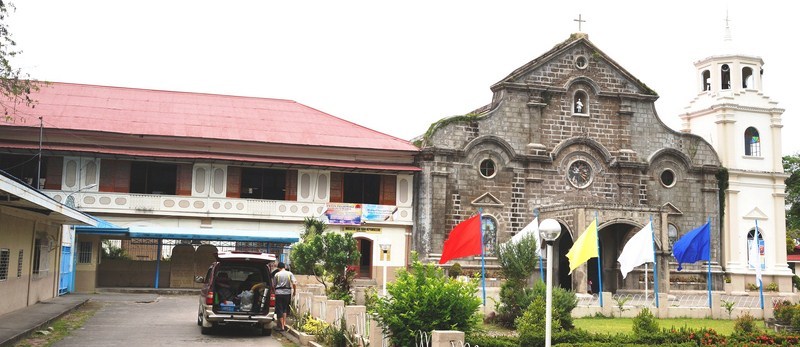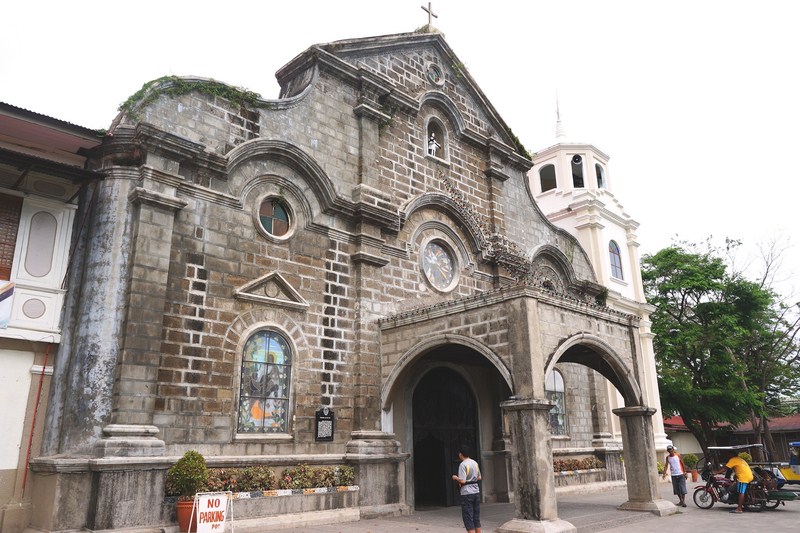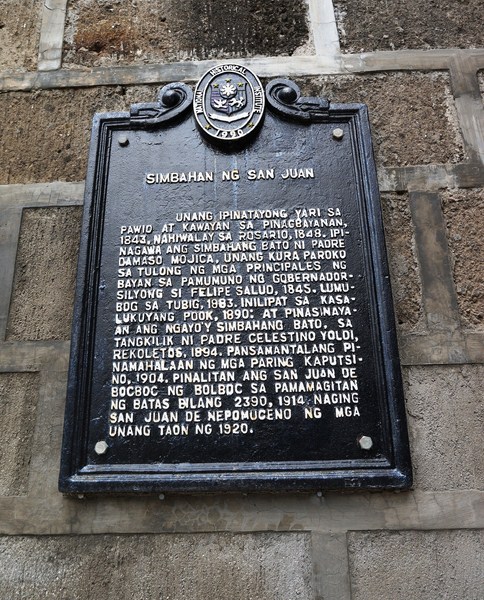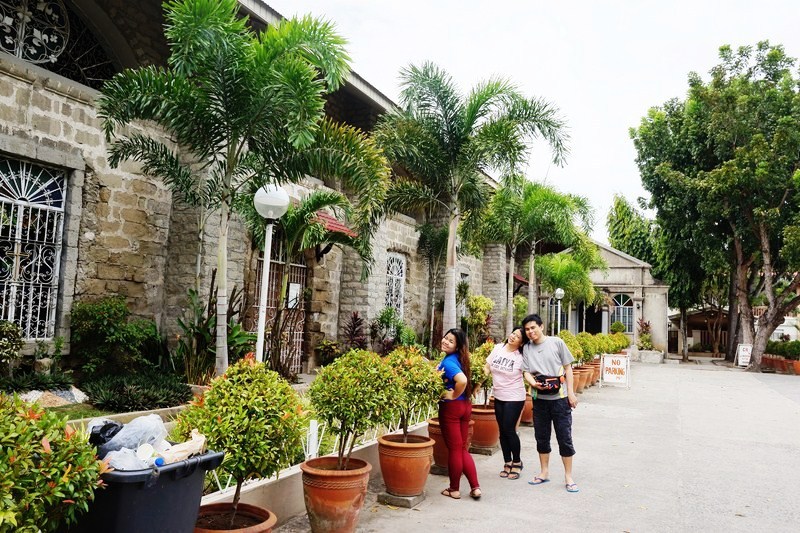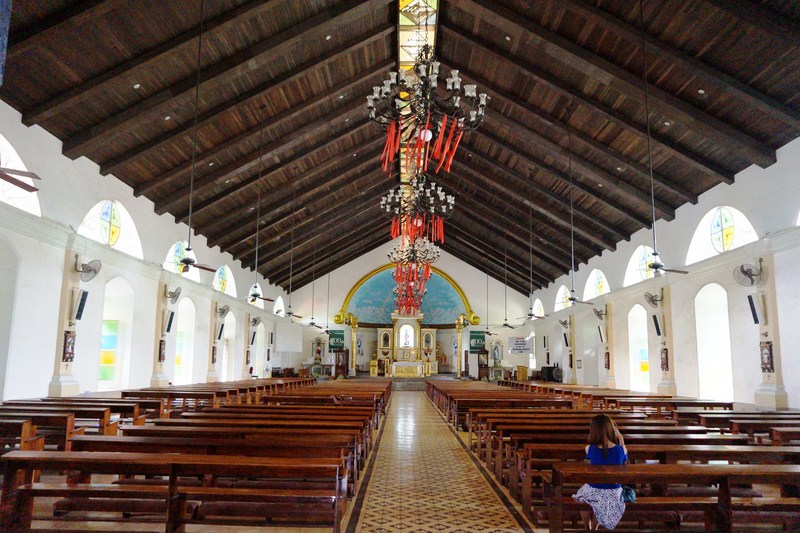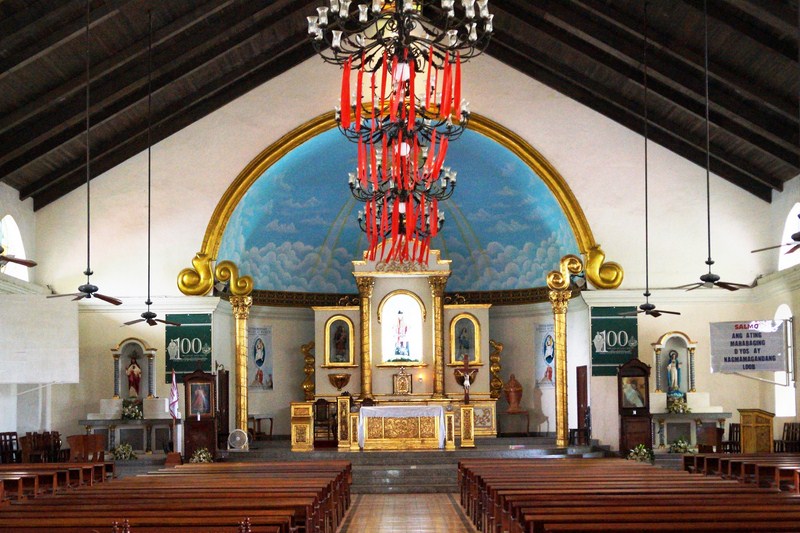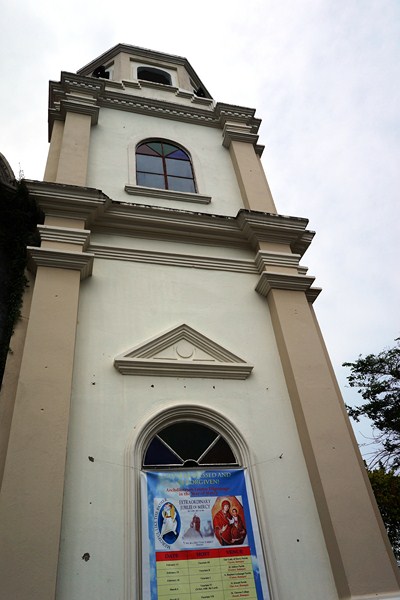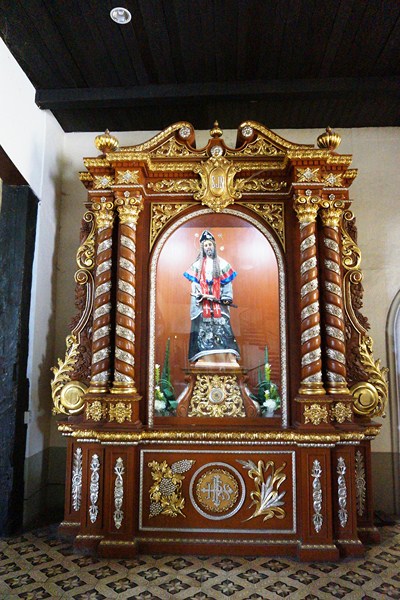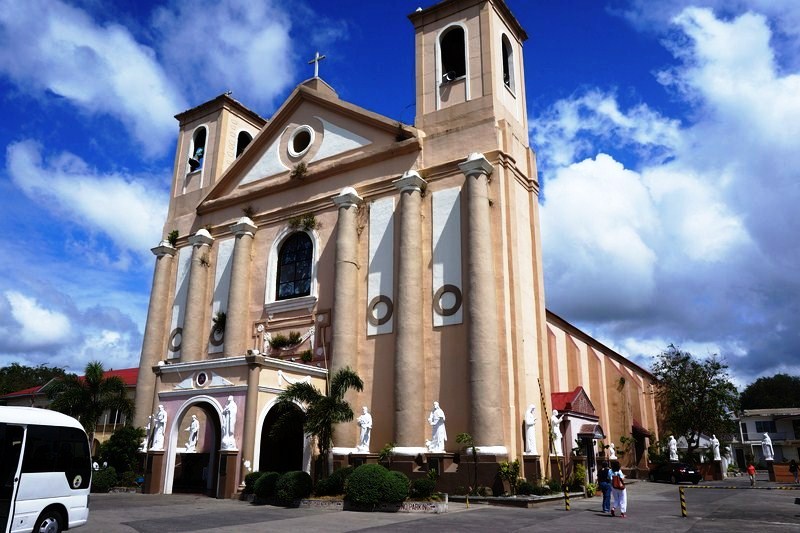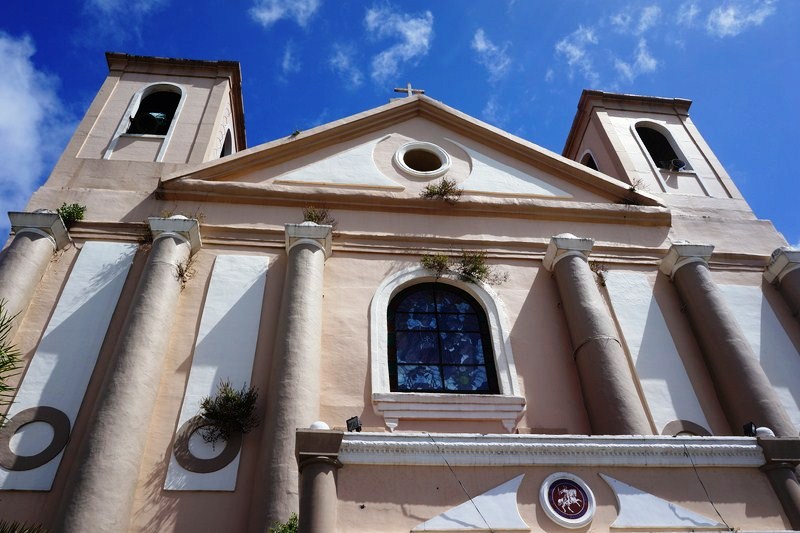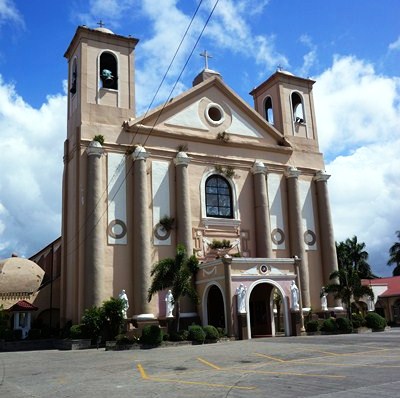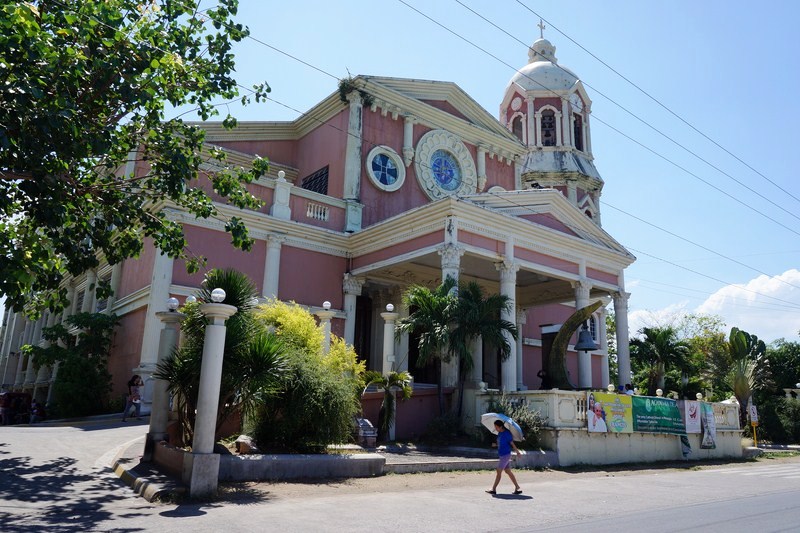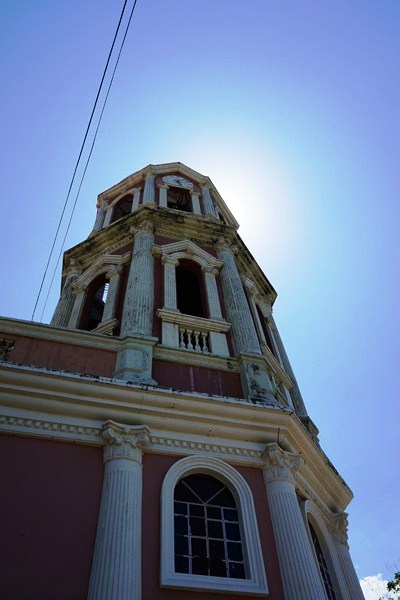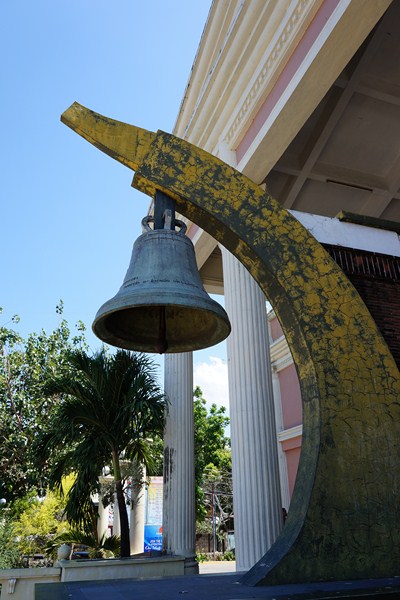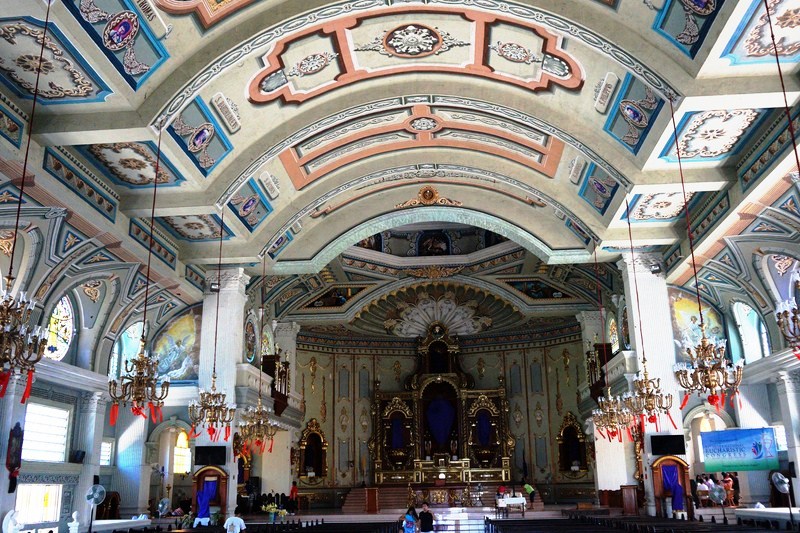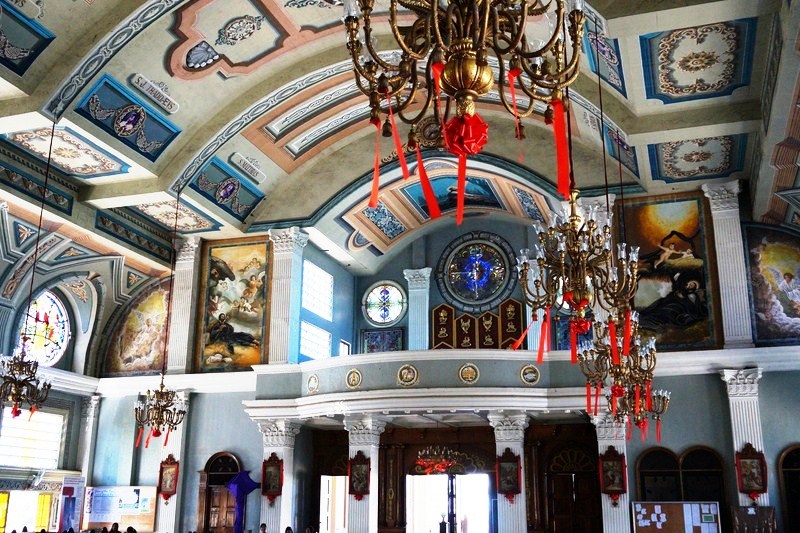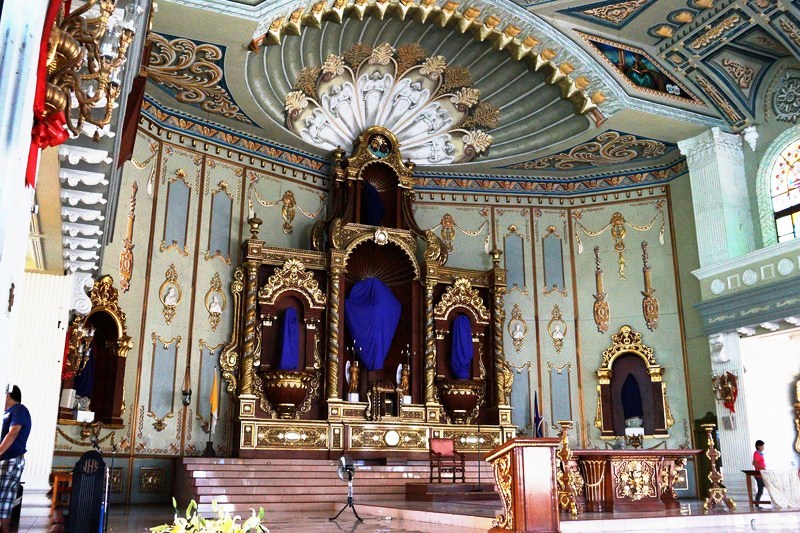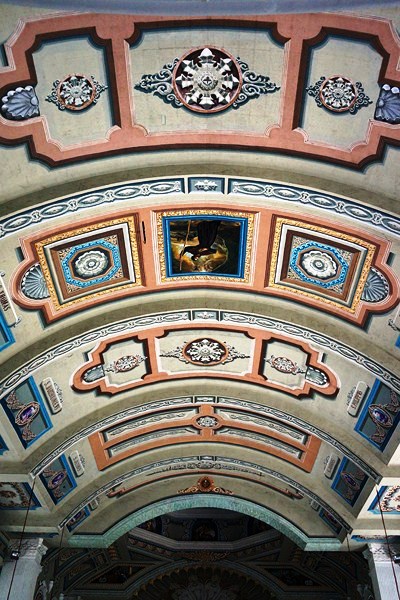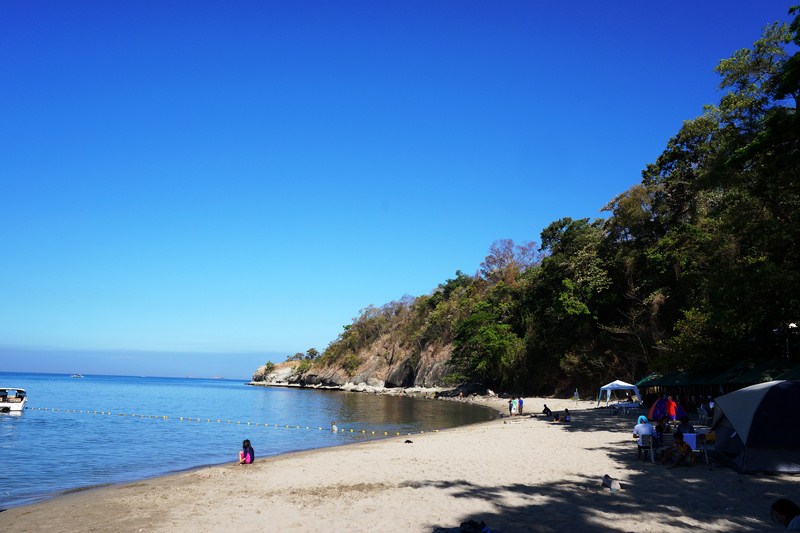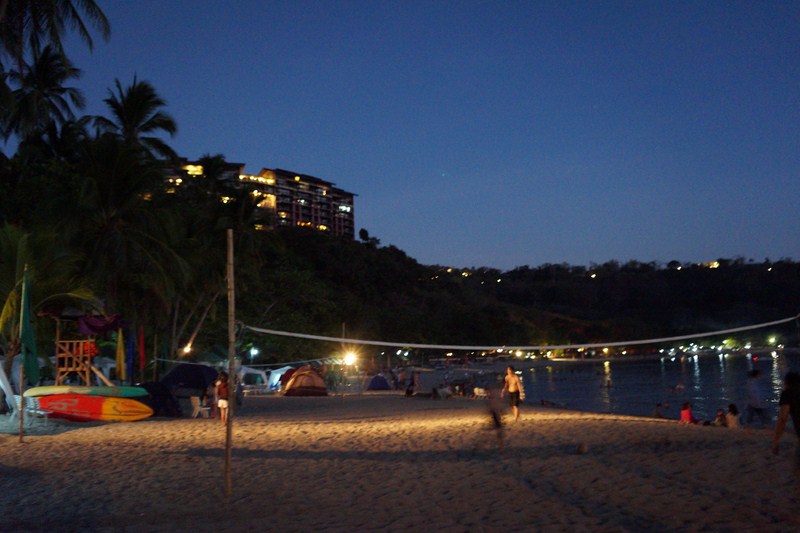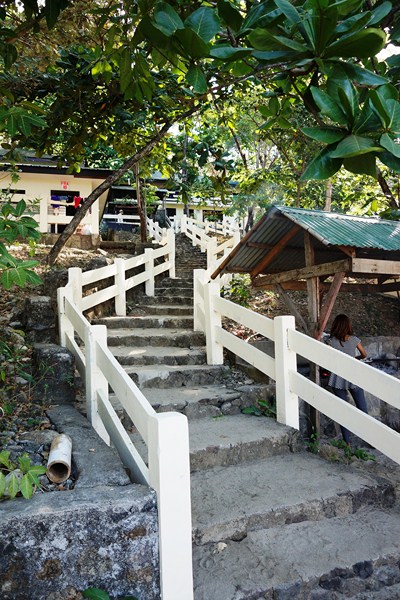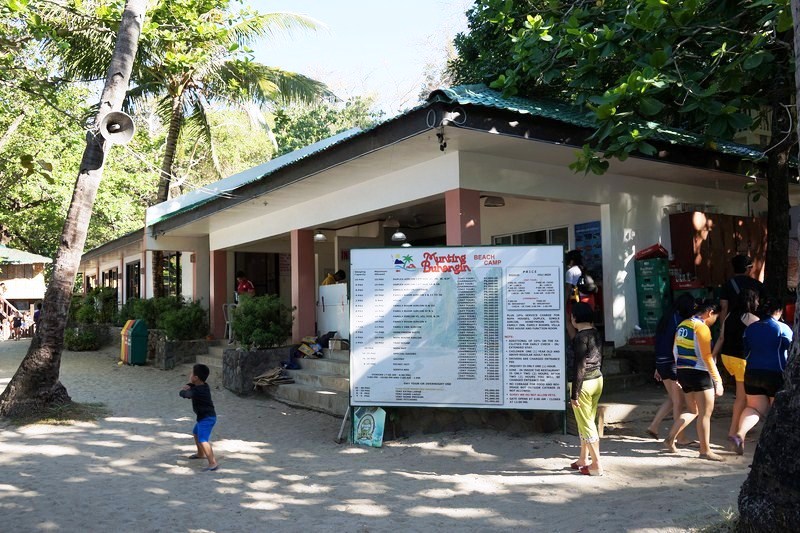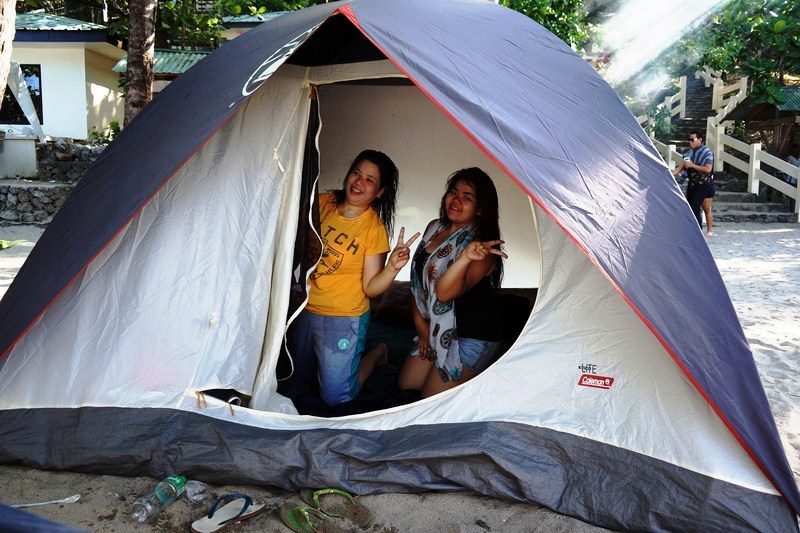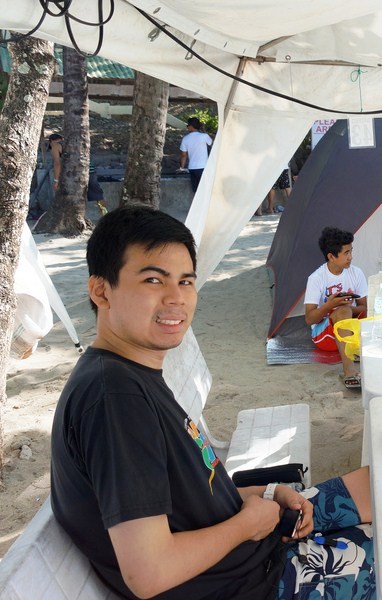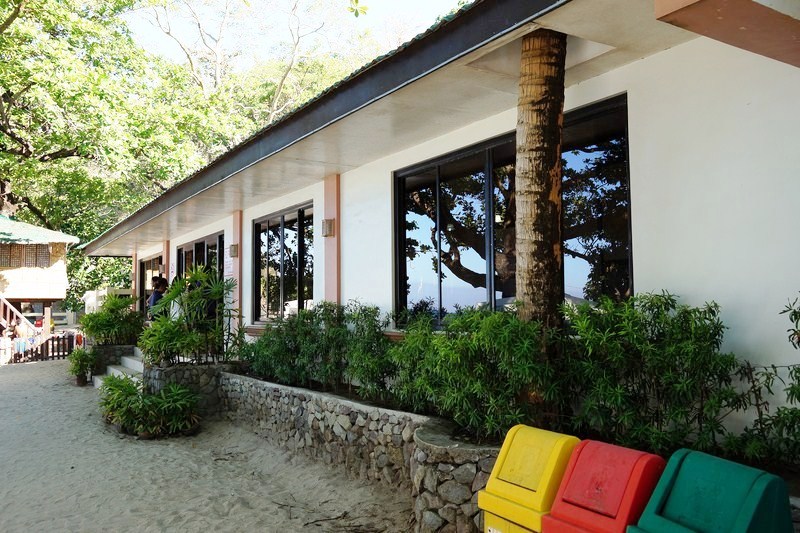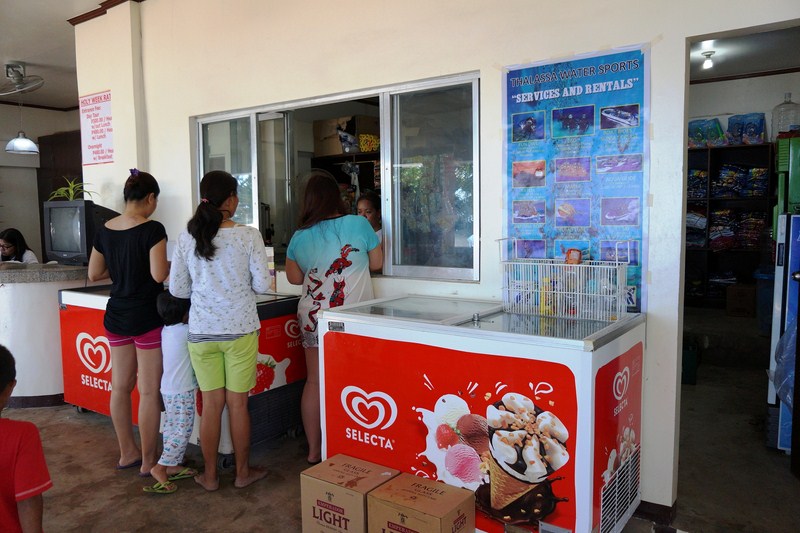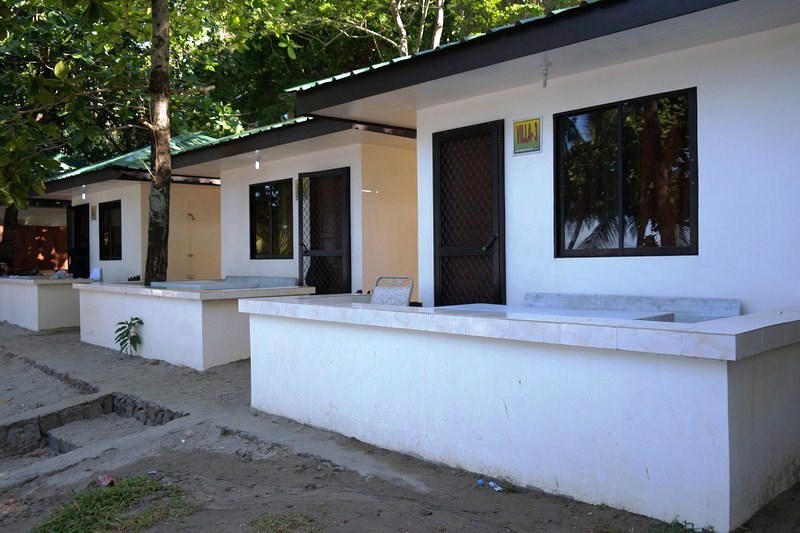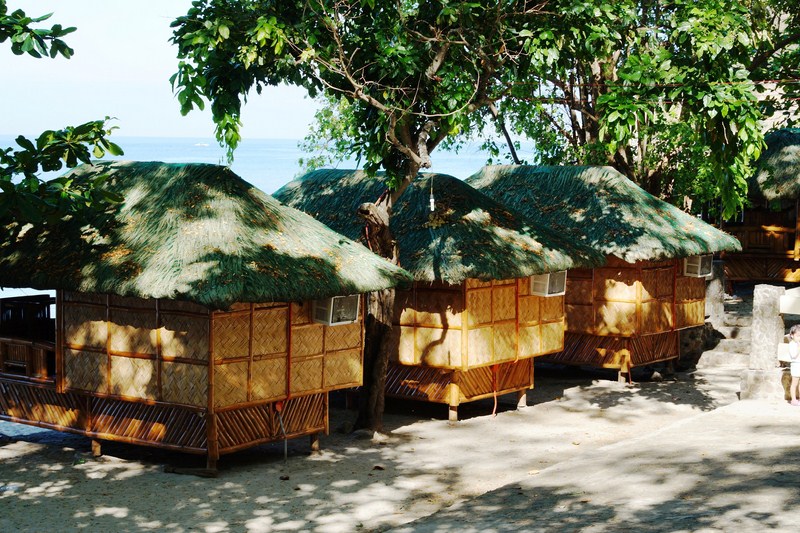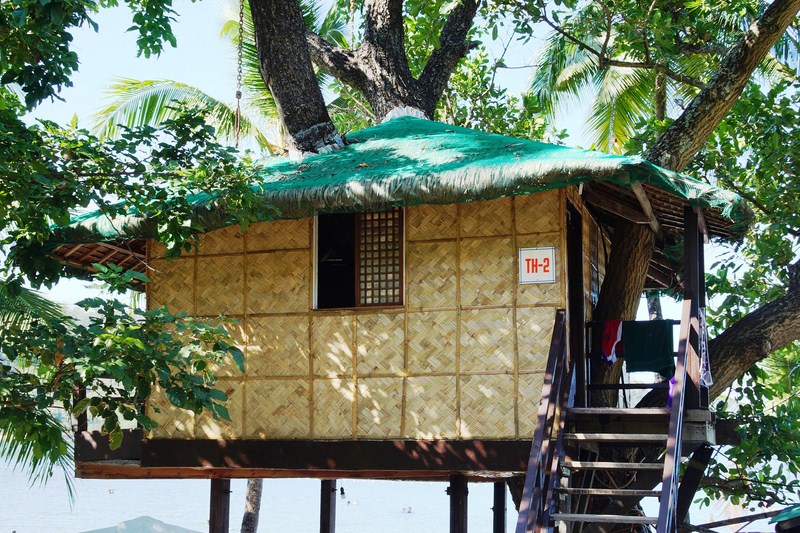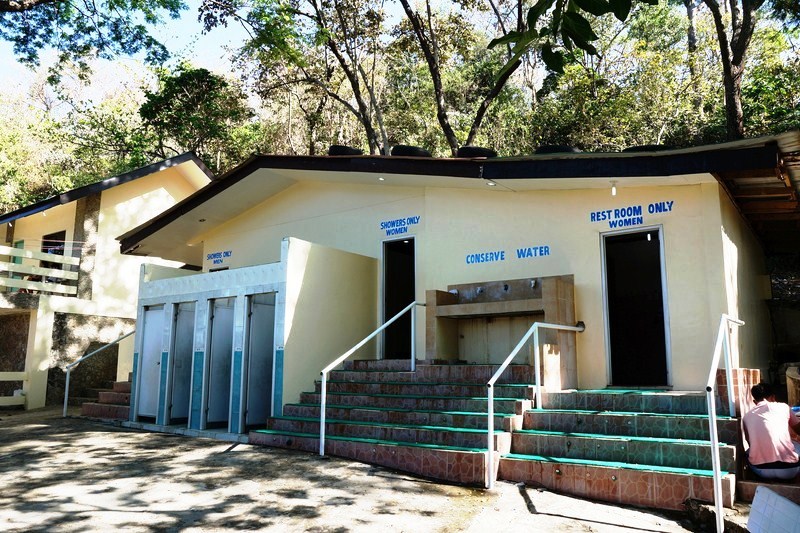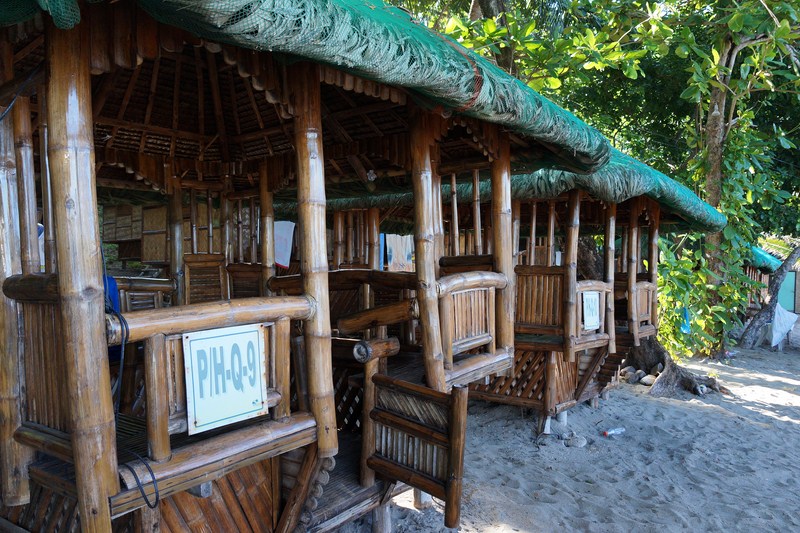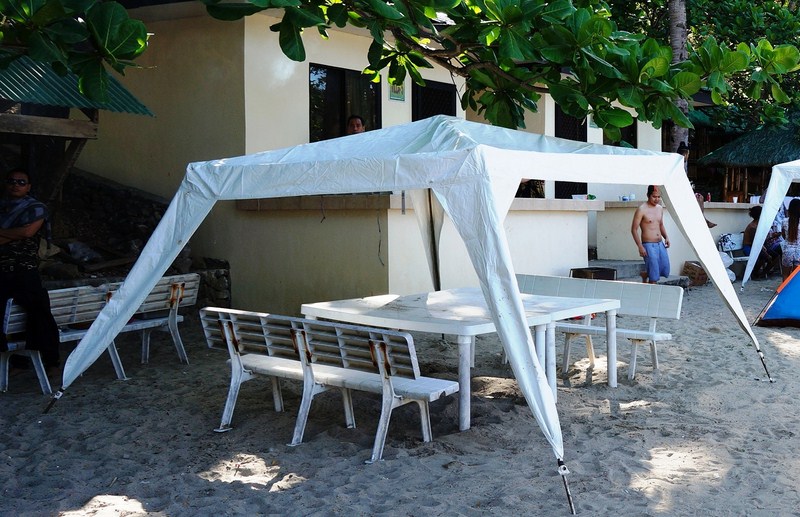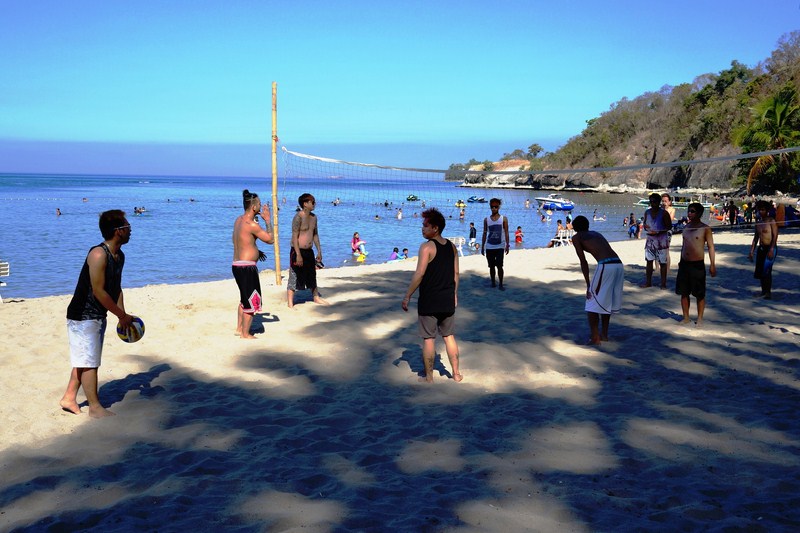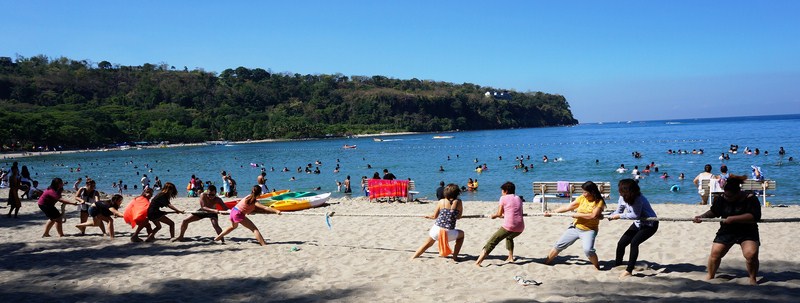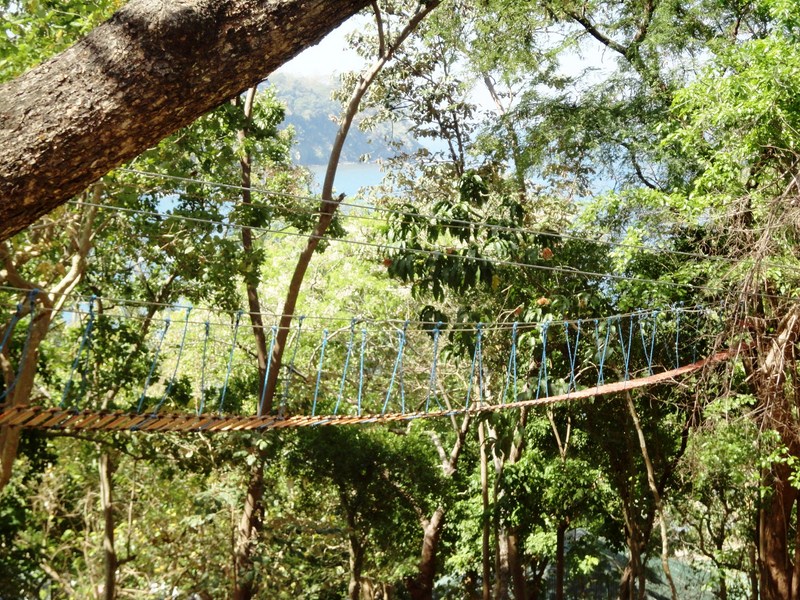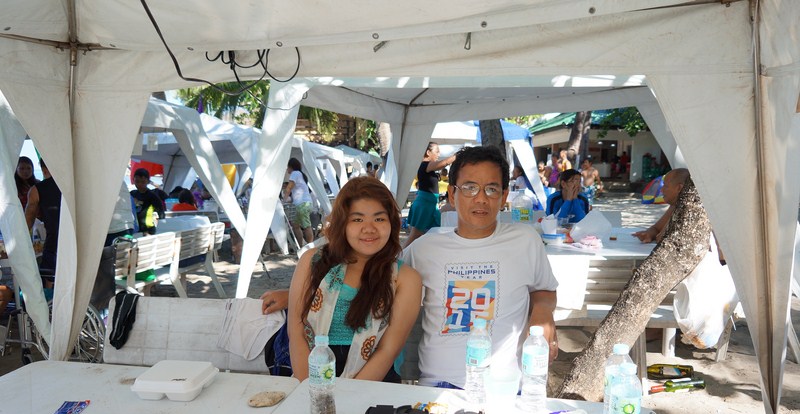After lunch at Liam’s Lomi House, we still had time to kill before checking in at The Zen Villas Resort so we decided to visit Casa de Segunda which was just a 1.7 km. (10-min.) drive away.
Also known as Luz–Katigbak House, the well-preserved Casa de Segunda is a heritage house built in the 1880s and owned by Don Manuel Mitra de San Miguel-Luz and Doña Segunda Solis Katigbak, Dr. José Rizal’s first love.
In 1956, the house was repaired by Paz Luz-Dimayuga who serves as one of the caretakers of the house museum and, in 1996, after the house and its surrounding compound was renovated, was declared as a national Heritage House by the National Historic Institute.
The present heiresses, the great-granddaughters of Doña Segunda Katigbak-Luz, maintain and manage the house, as well as Ms. Lilith Malabanan (great great grandchild of Segunda), who lives near Casa de Segunda. At present, the house was converted into a museum.
We entered the house through a nondescript entrance gate (designed by Lucila “Luchi” Reyes-Resurreccion during the 1996 renovation) and into an inner courtyard, with weathered red tiles, whose focal point is a quatrefoil-shaped, brick fountain, fishpond, and an orchard.
Upon entry, we were met by a caretaker who lives at the adjoining replica of a 19th-century house, which was occupied by one of the Luz–Katigbak heirs.
She acted as our guide around the house which we entered via the zaguan (entrance), the storage area for agricultural harvests and the family’s carroza (processional carriage) for the revered santo and, now, the receiving area for the visitors of the museum.
Its floor is paved with black-and-white machuca tiles which were partially damaged during the bombing of Lipa during the World War II. It featured information materials, cultural artifacts and a copy of a portrait of Segunda as well as the portrait of her parents and photographs of the families of the Luz–Katigbak heirs.
According to her, the Luz–Katigbak House was one of the houses built by Don Norberto Calao Katigbak, a gobernadorcillo, from 1862 to 1863, who was known to own big parcels of land in Batangas.
The Katigbaks were one of the richest families in the province. Part of their wealth was attributed to the coffee industry, being one of the major business ventures in the past. Norberto was married to Doña Justa Mitra de San Miguel-Solis and their daughter was Doña Segunda Solis Katigbak (1863-1943).
Our National Hero José Rizal was captivated by the 14-year old, charming and graceful Segunda whom he met through his sister, Olimpia who was one of her classmates at Colegio de la Immaculada Concepcion de la Concordia in Santa Ana, Manila.
Don Mariano Solis-Katigbak, Segunda’s older brother, also was a close friend and classmate of Rizal at Ateneo Municipal. However, as Segunda was already betrothed to her uncle Don Manuel Mitra de San Miguel-Luz (1858-1942) from a wealthy family in Lipa, Batangas), Rizal never proposed.
Eventually, Don Manuel and the 16-year old Doña Segunda got married, on January 12, 1879, and had 14 children, 9 of whom survived to mature age.
Known in the province as a family of scholars, political leaders, professionals and artists, one of its descendants of the Luz–Katigbaks is Arturo R. Luz, a National Artist for Visual Arts.
This house was originally built on a square plan, with an azotea (terrace) extending it into an L-shaped plan. The adobe wall, at the ground floor, was plastered with lime mortar.
The house was also one of the set locations for Pulang Lupa, a 2024 Philippine drama series starring Barbie Forteza, Sanya Lopez, David Licauco and Alden Richards.
From the zaguan, we moved on to the comedor (dining area), below the azotea, which has a pleasant view of the inner courtyard. We also entered the entresuelo, meant to be the servants’ quarters but sometimes used as an office.
We then went up the hagdan (grand staircase) leading up to the sala mayor (living room), at the piso principal (main floor), whose flooring were made out of mid-sized narra planks, of deep warm color. It is furnished with 19th century furniture (including a large, chic Venetian mirror), valuable heirloom pieces, paintings and antique portraits.
The three sides of the room were surrounded by wood and capiz sliding windows, which protect the room from rain water without blocking the sunlight, and persiana panels which serves as the second layer of the windows, providing ample protection from sunlight.
Below the pasamano (window sills) are ventanillas with balusters, which draw up the prevailing breeze inside the house. The transom (upper part of the window) was protected by wood and capiz panels, in a diagonal pattern, which maintain soft lighting in the house.
On both sides of the staircase are the cuartos (bedrooms) while behind it is an impressive oratorio (prayer area) featuring a magnificent, locally-made Batangas uno mesa altar with statues of saints displayed on top. Two antique frames encase Segunda’s novena and prayer pamphlets.
The master bedroom is furnished with a carved, 4-poster narra bed, accentuated with crocheted bed fineries, lace curtains, an aparador (wardrobe) and a vanity table with a full-length mirror. We finally visited the azotea, whose open portions are protected by restored balusters and, from there, went down a staircase, to the inner courtyard.
Casa de Segunda: 96 Rizal Street, 4217 Lipa City, Batangas. Tel: (043) 784 1952. Mobile number: (0977) 425-7598. Admission: Php100 (Php75 for seniors and PWD). Open daily, 8 AM to 5 PM.

